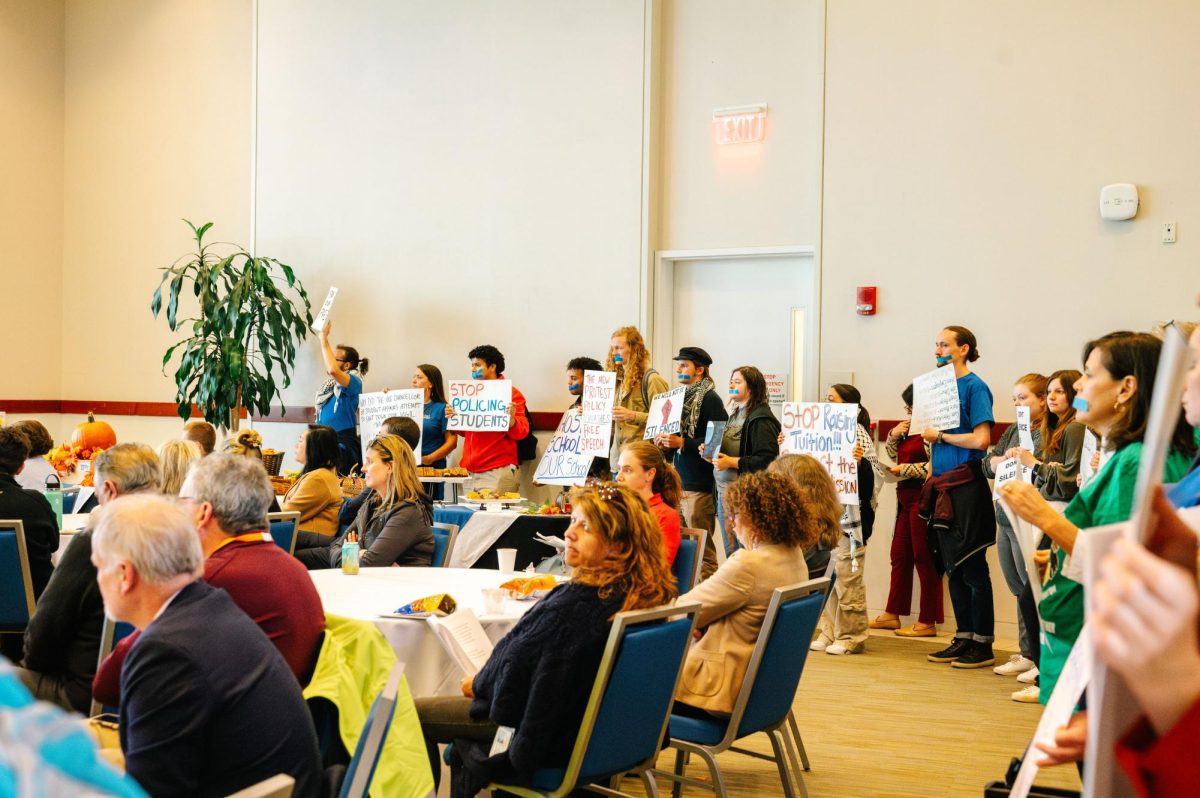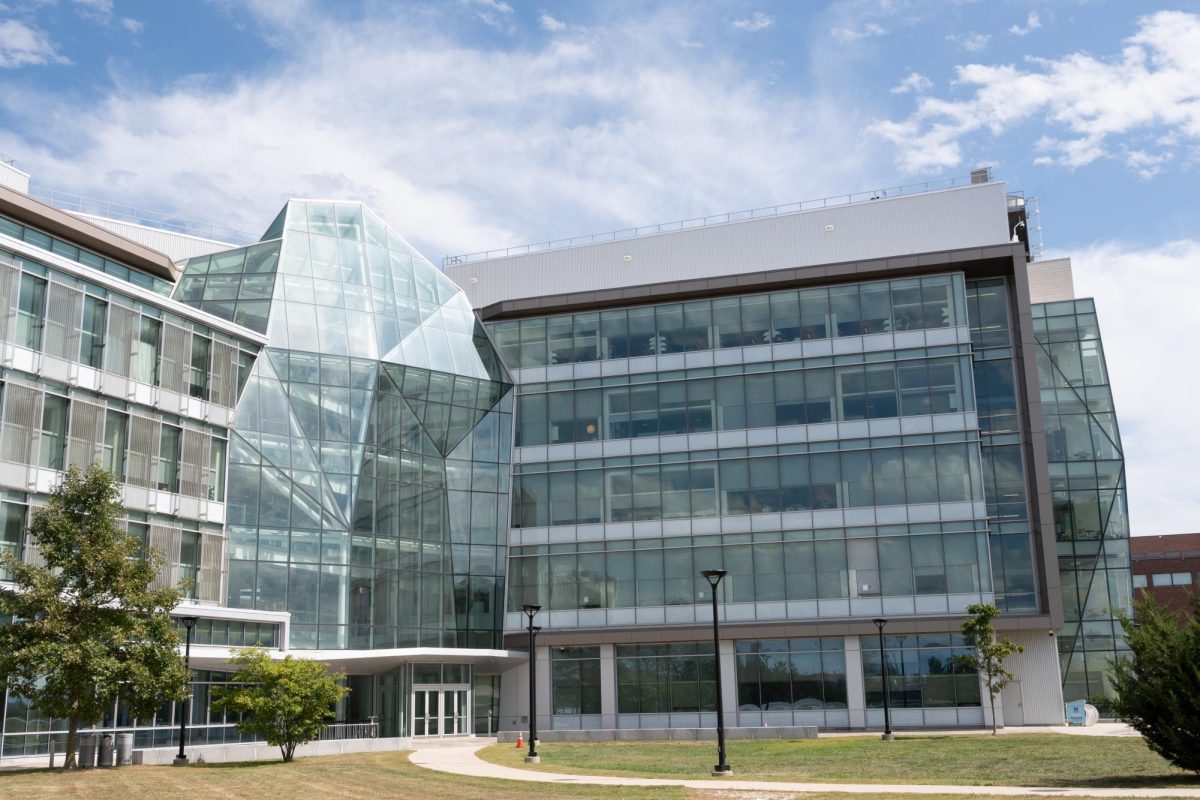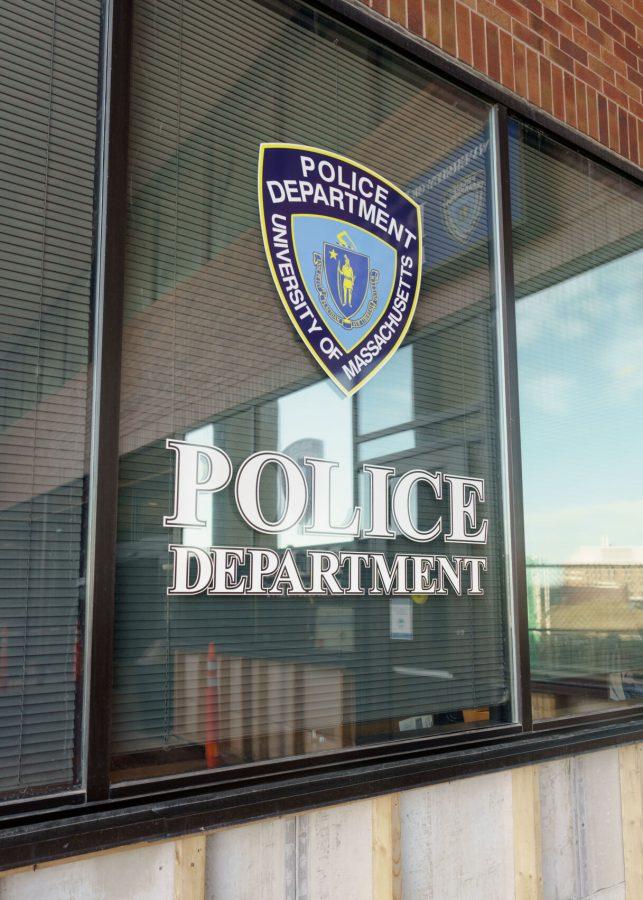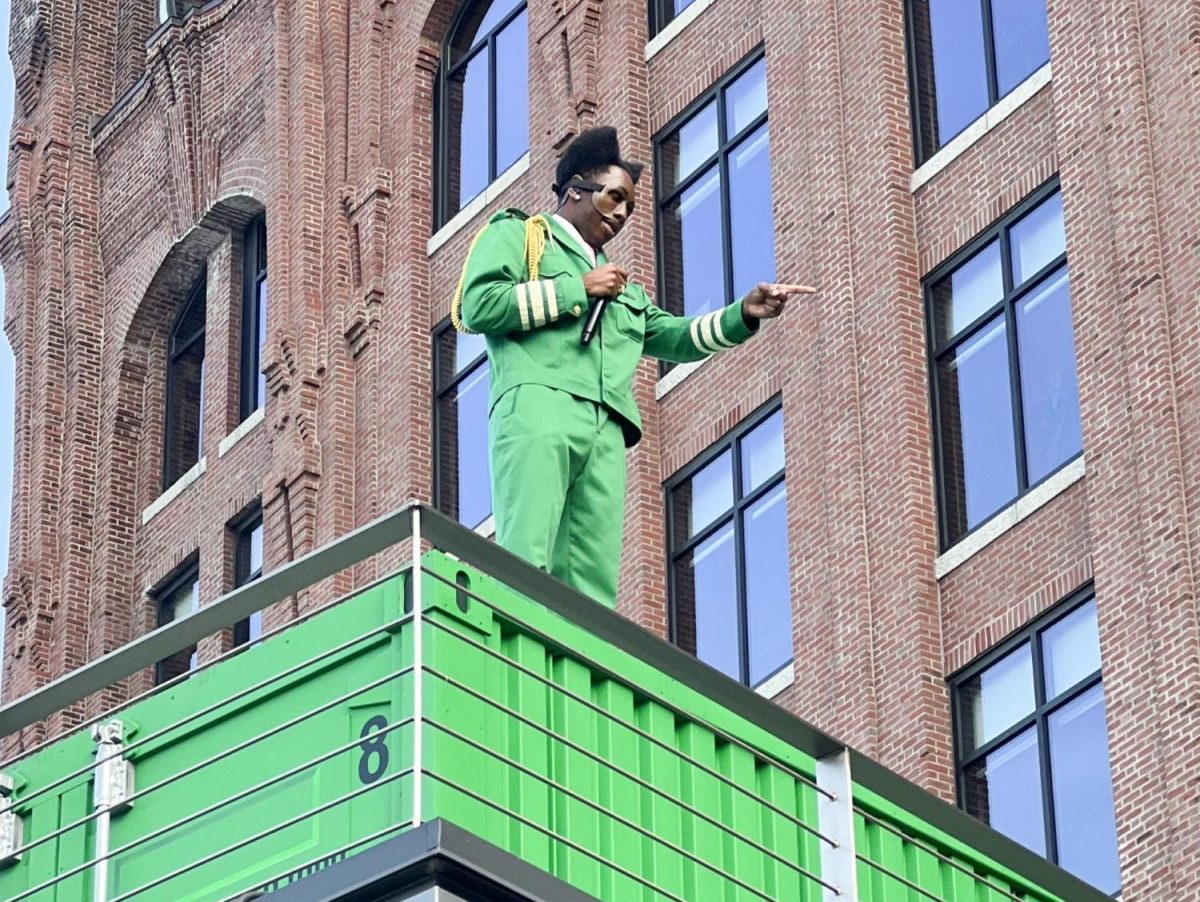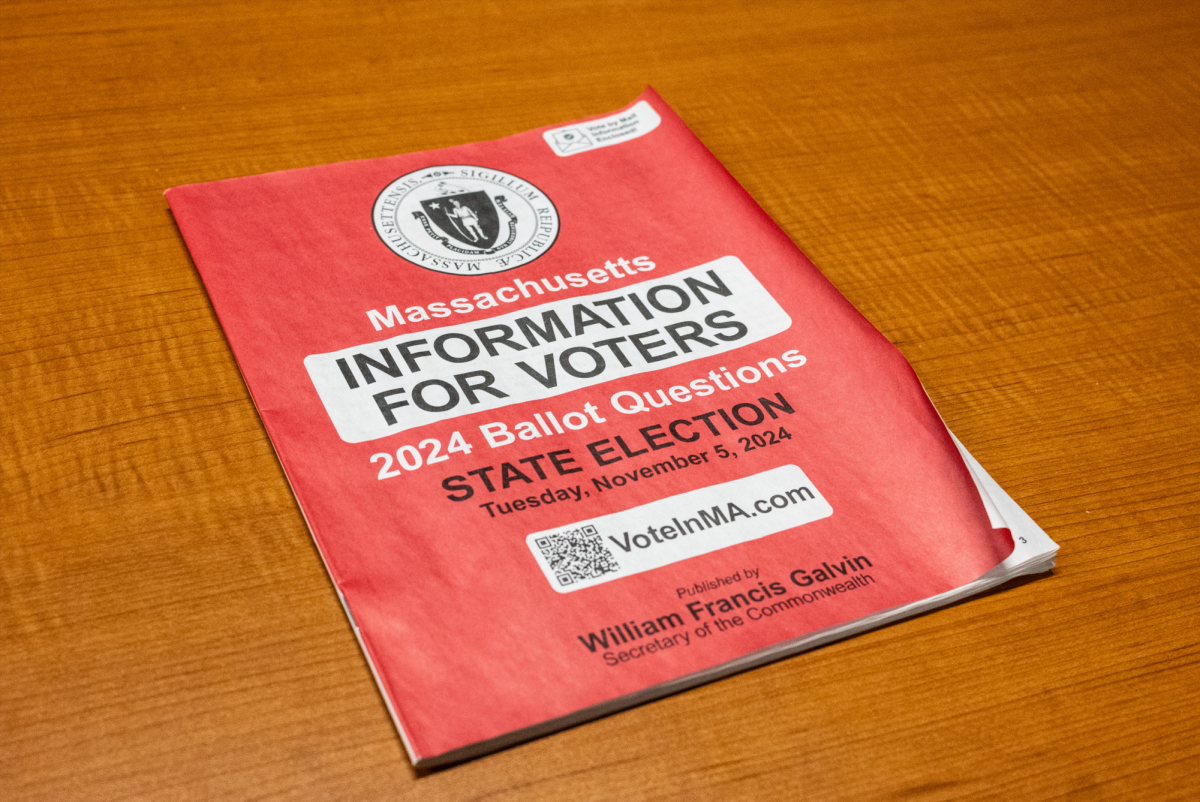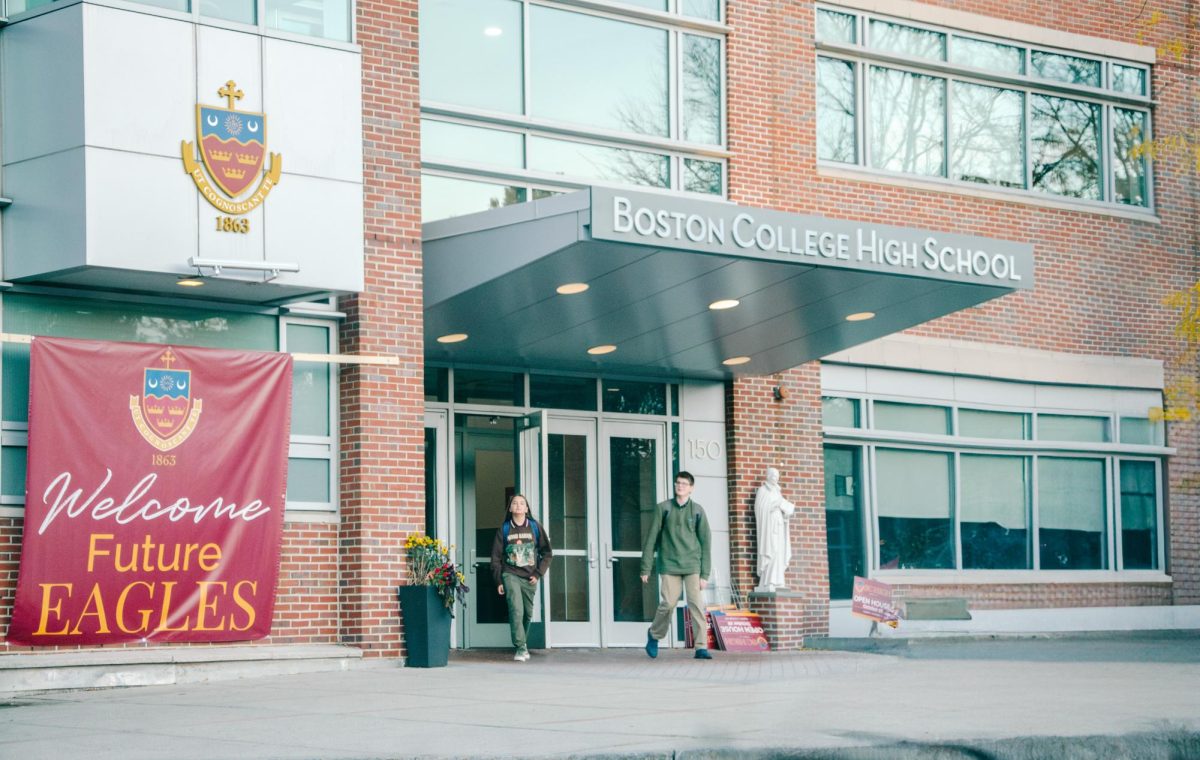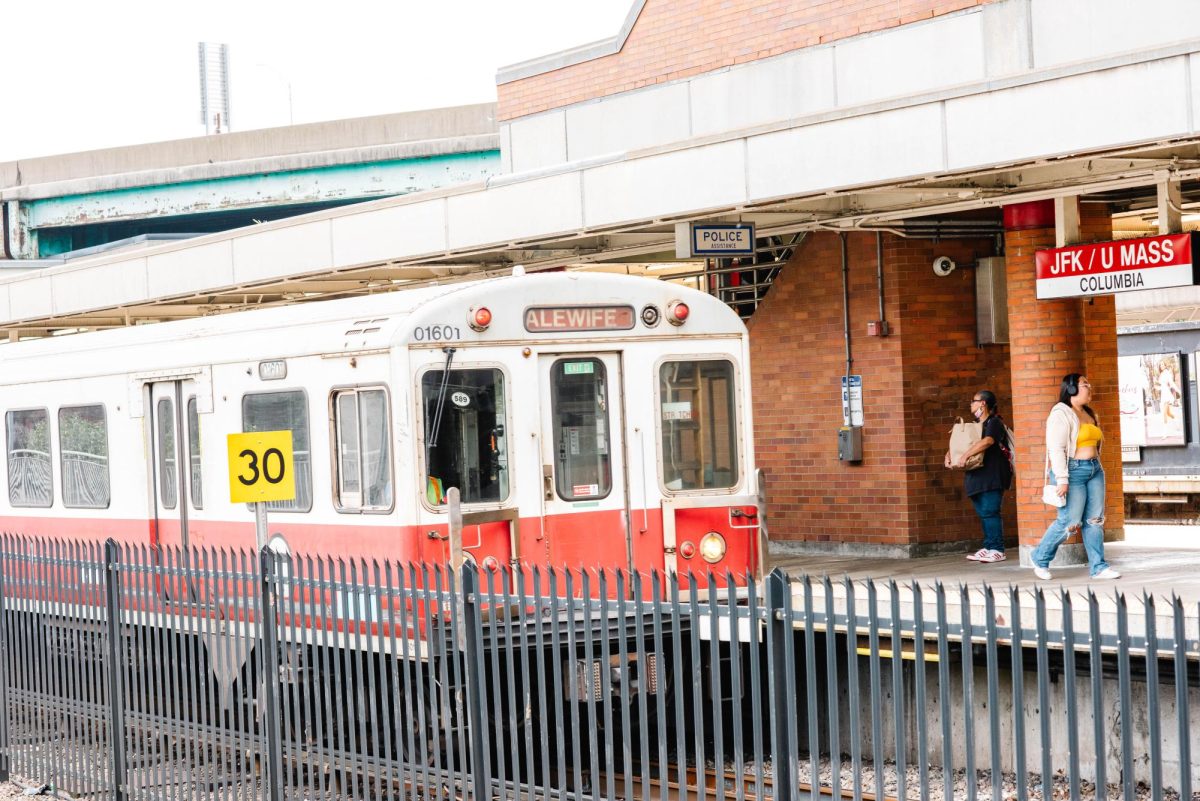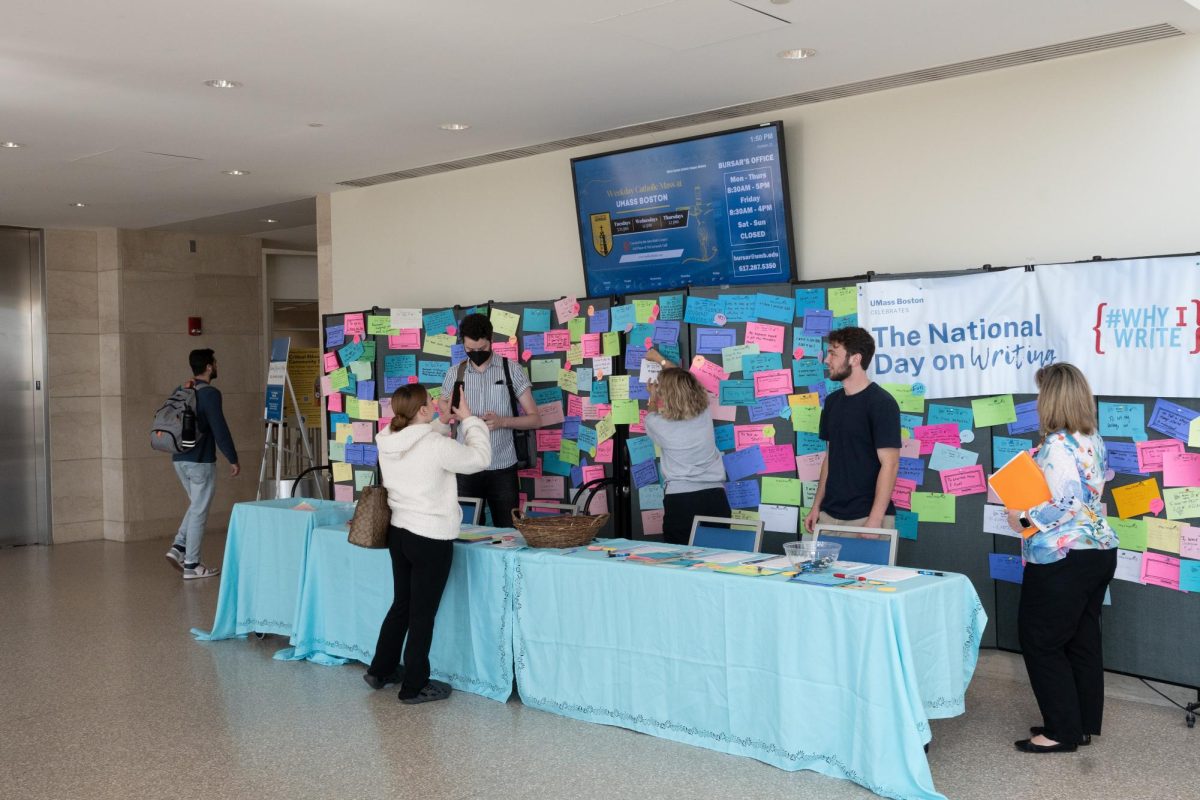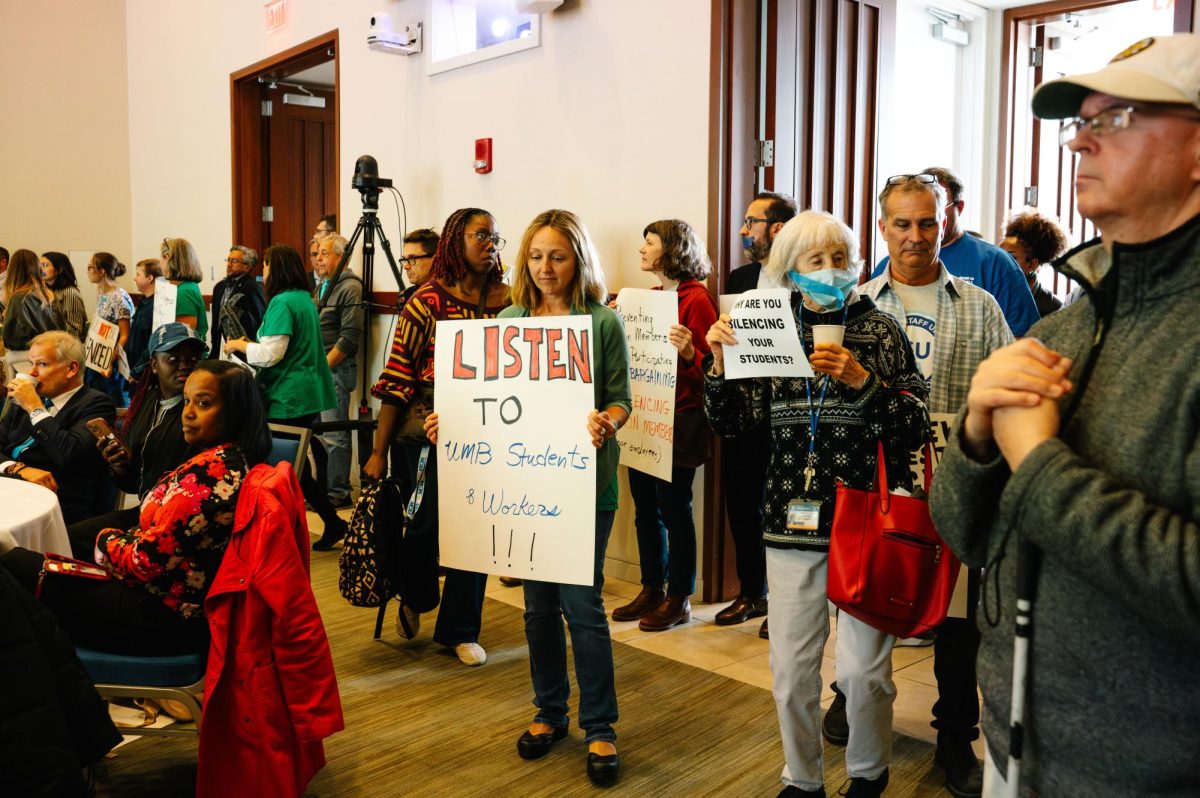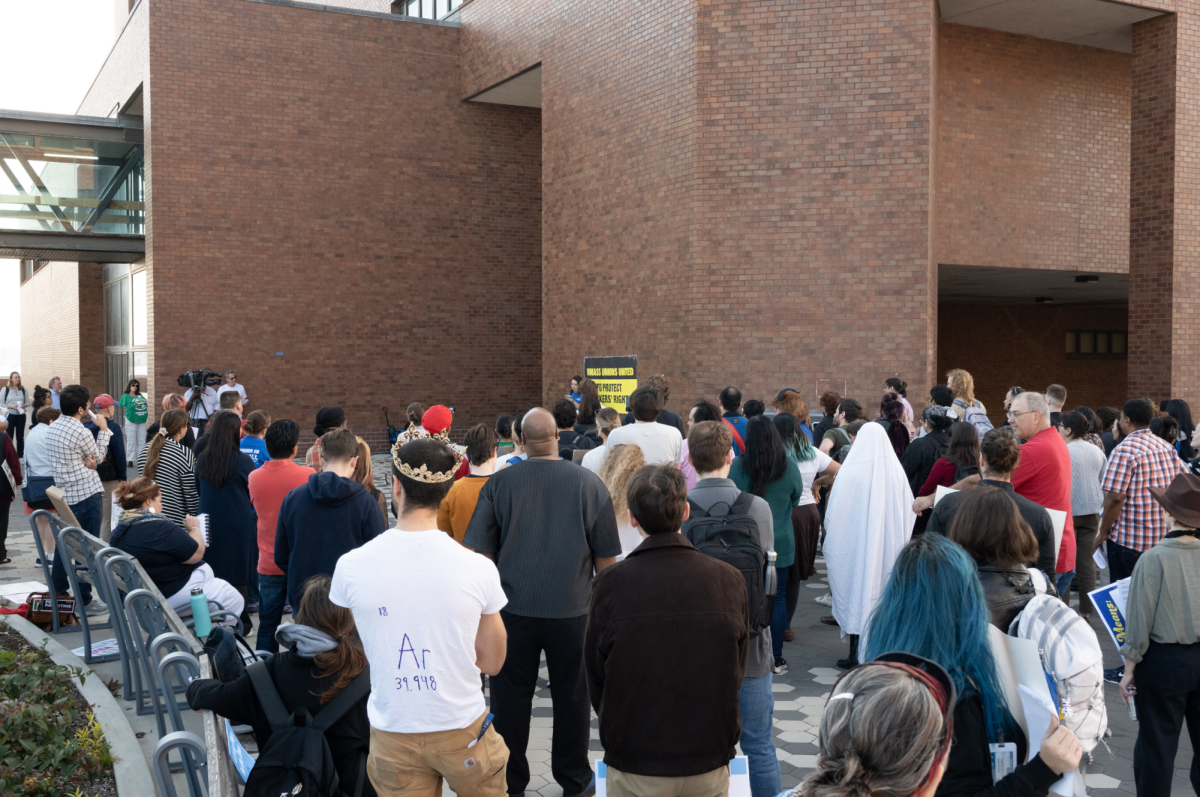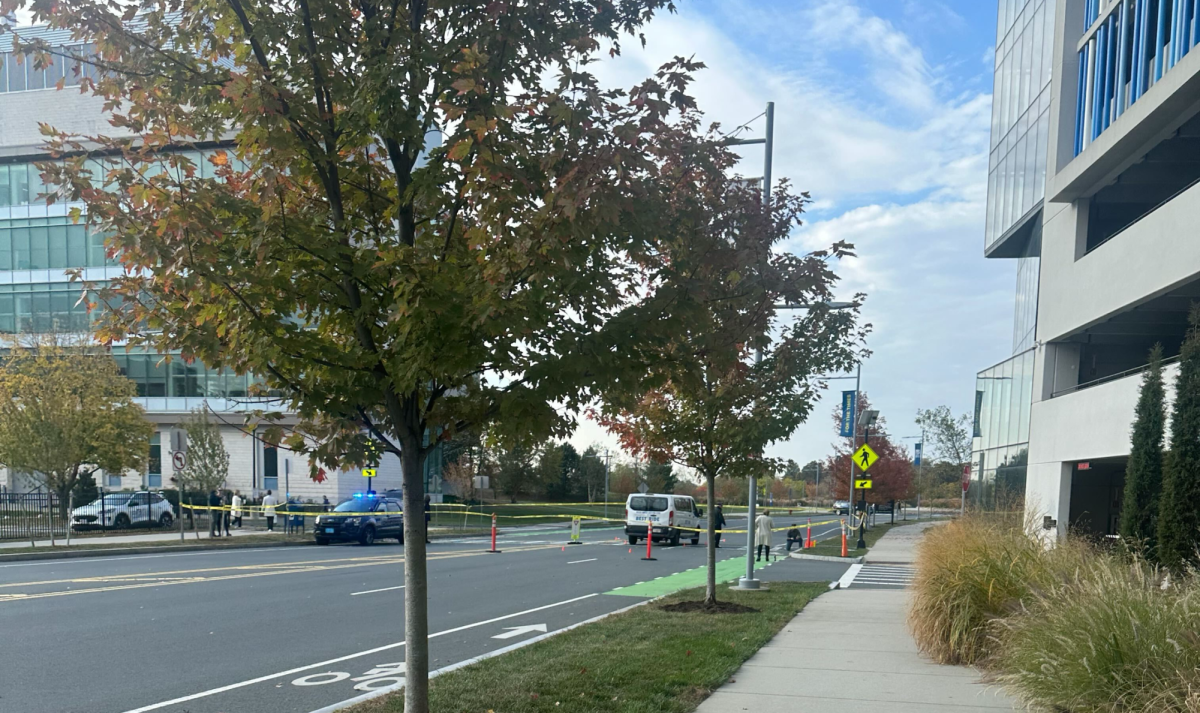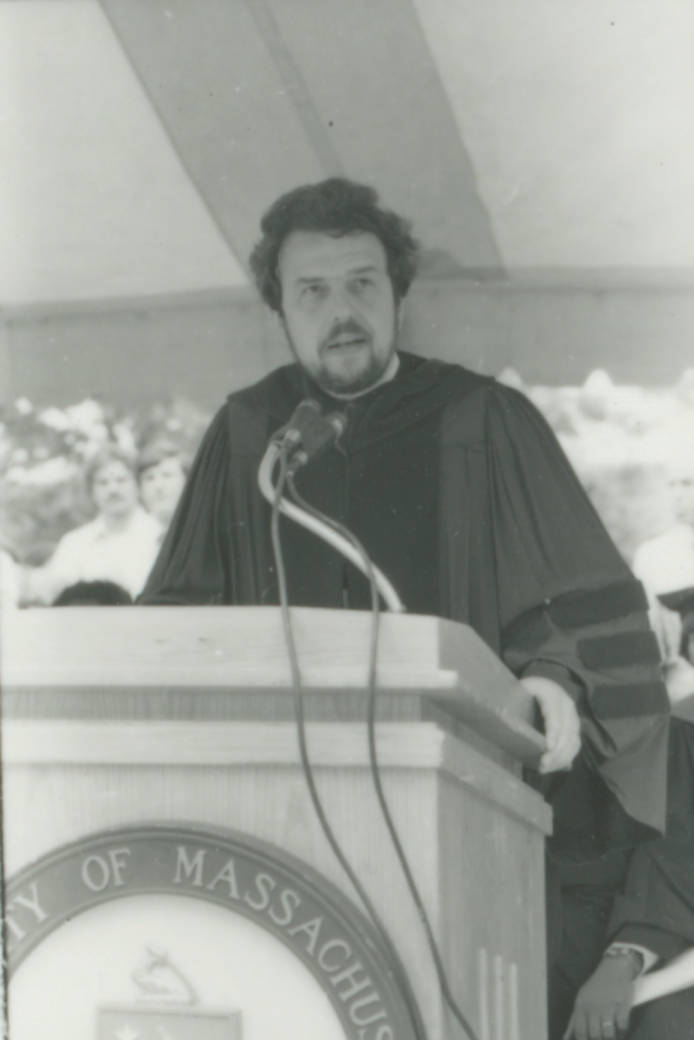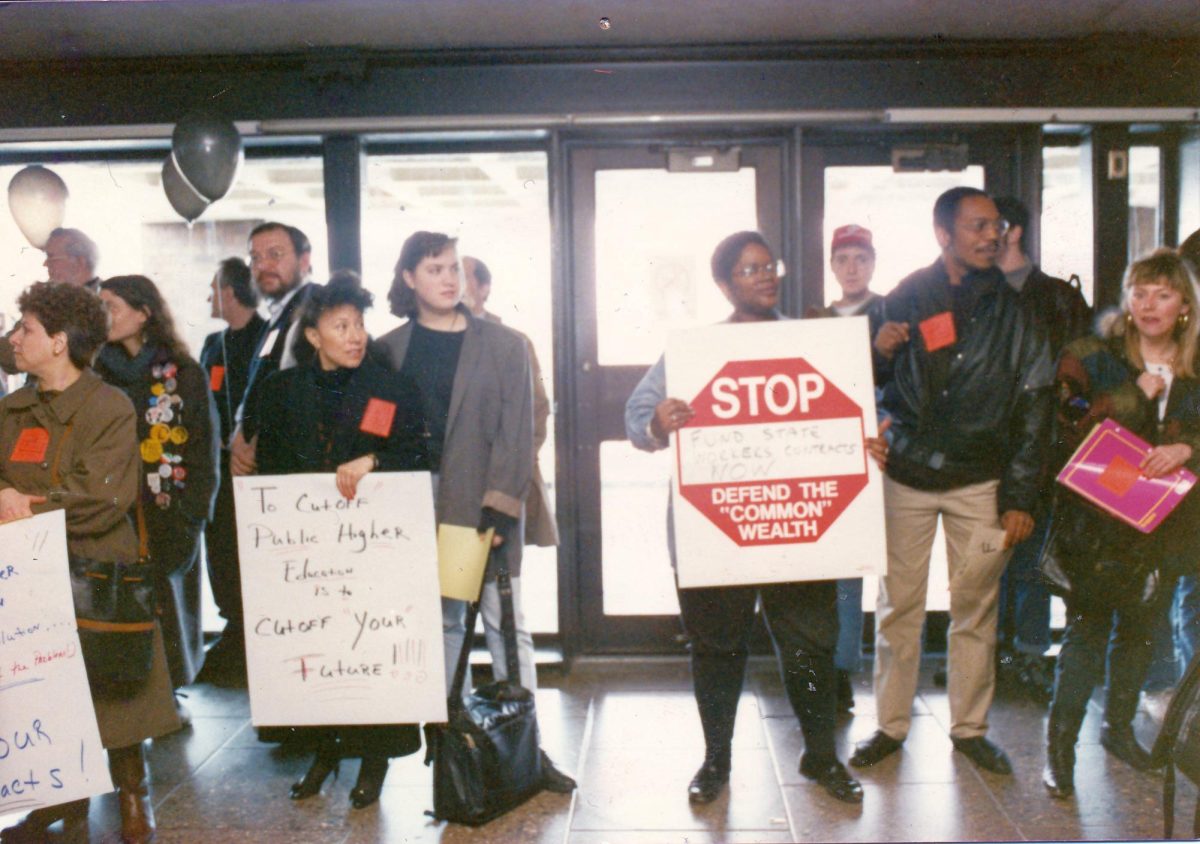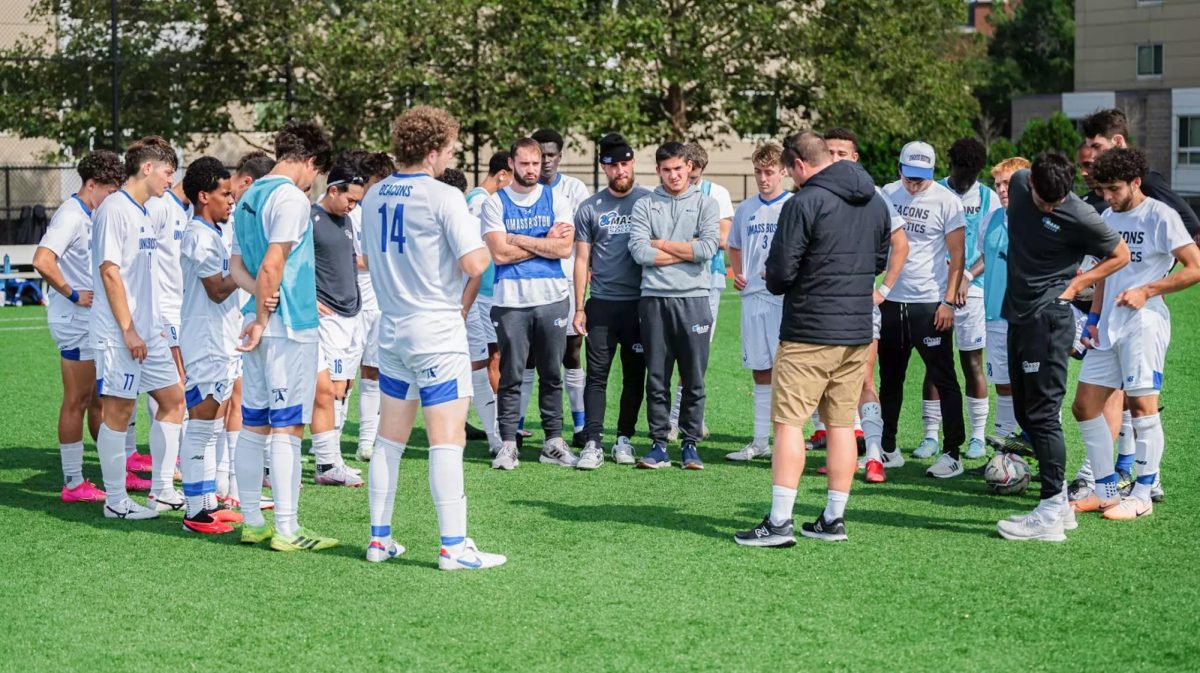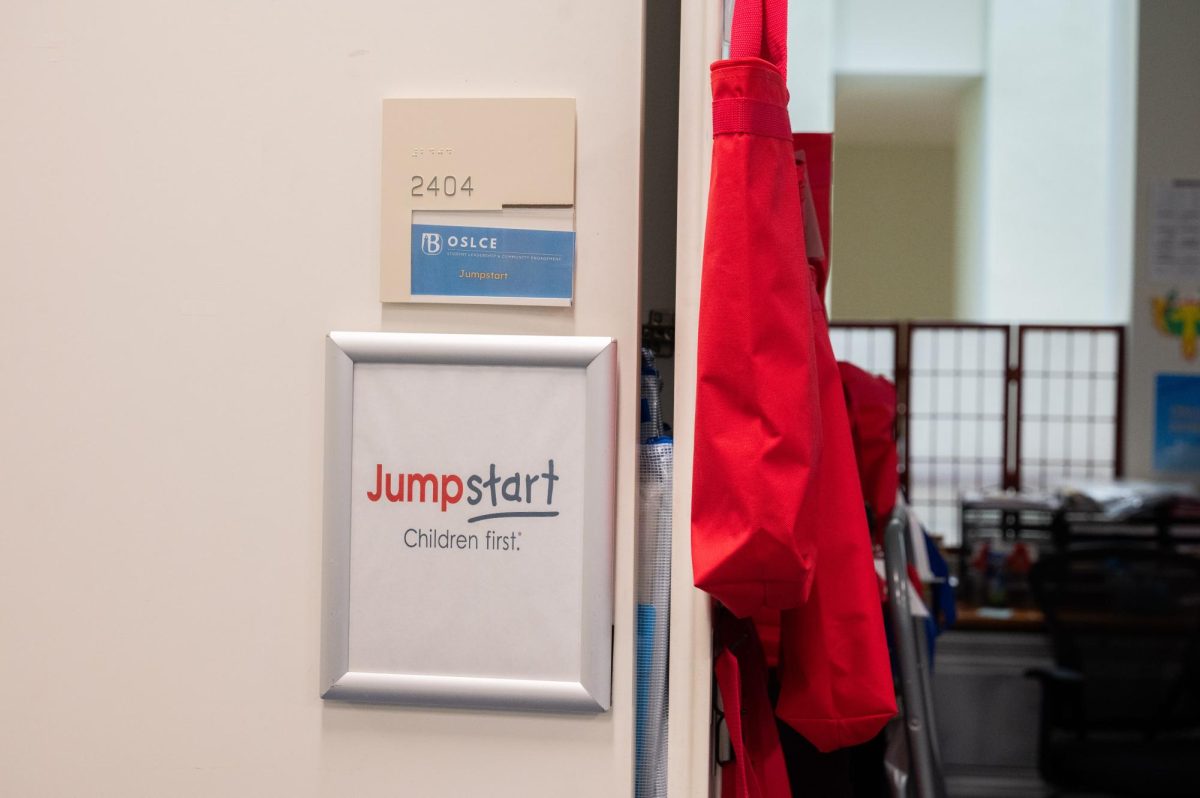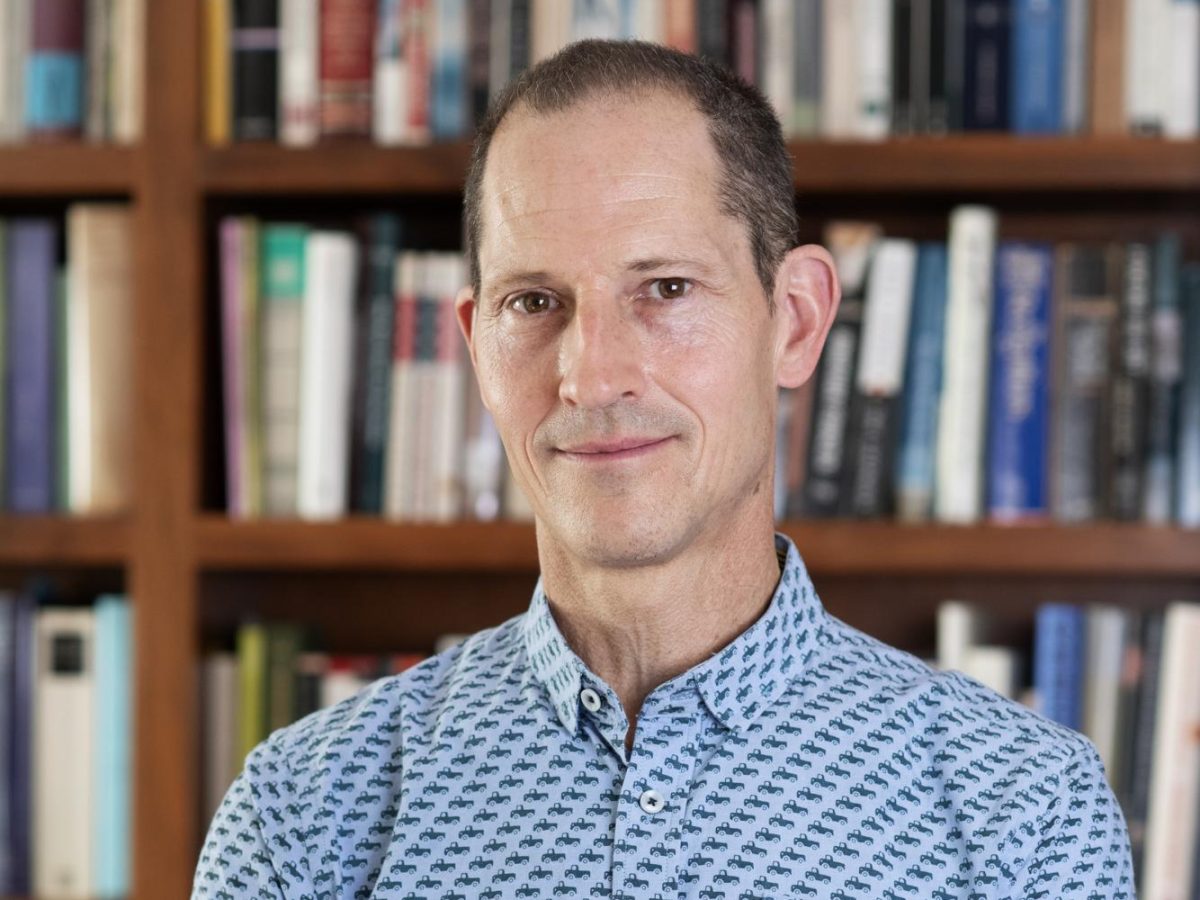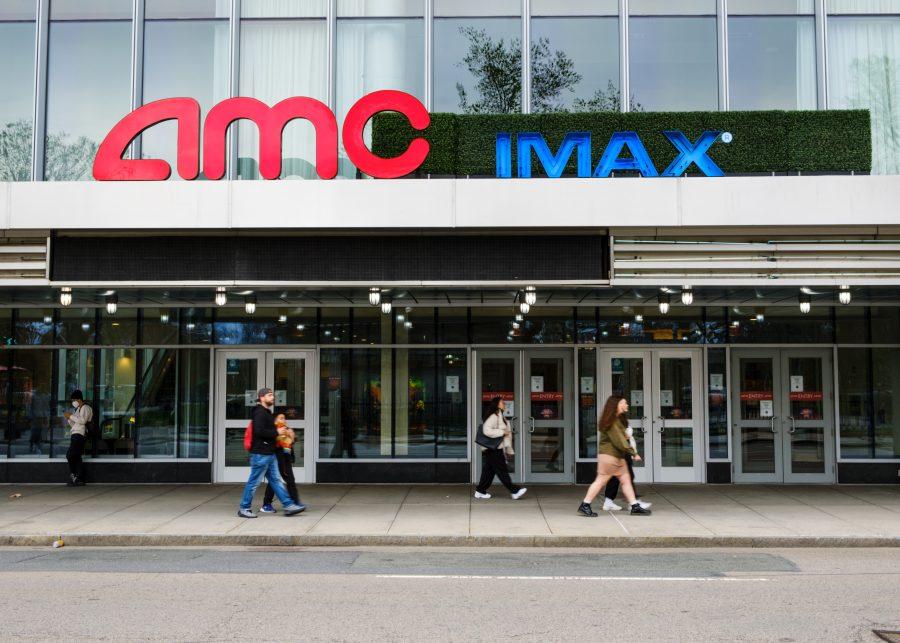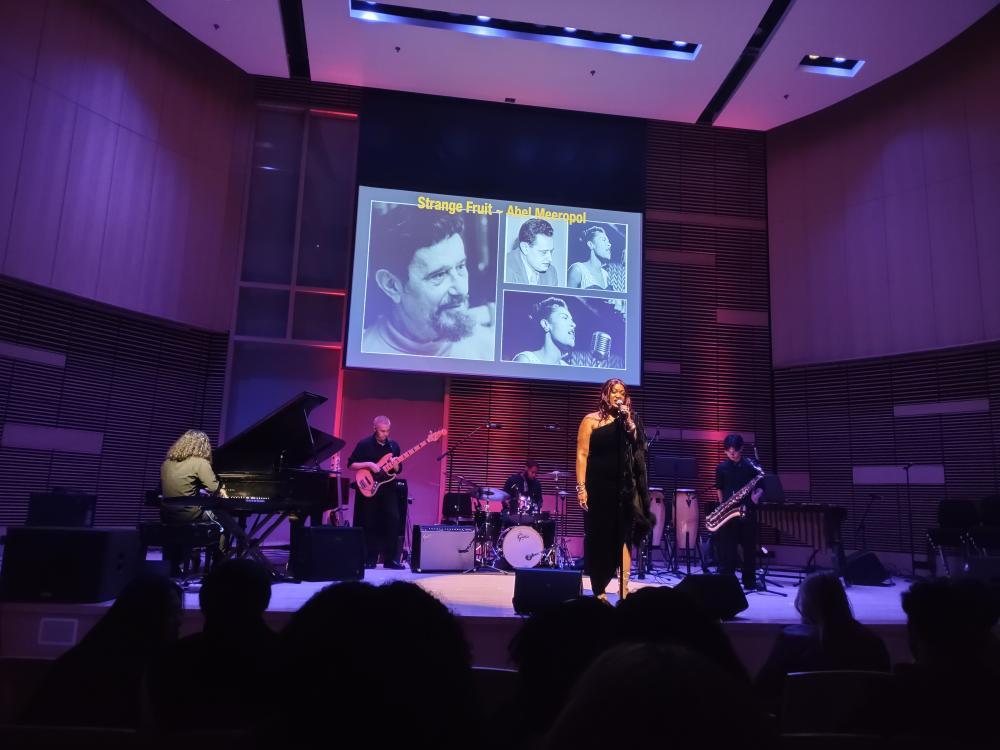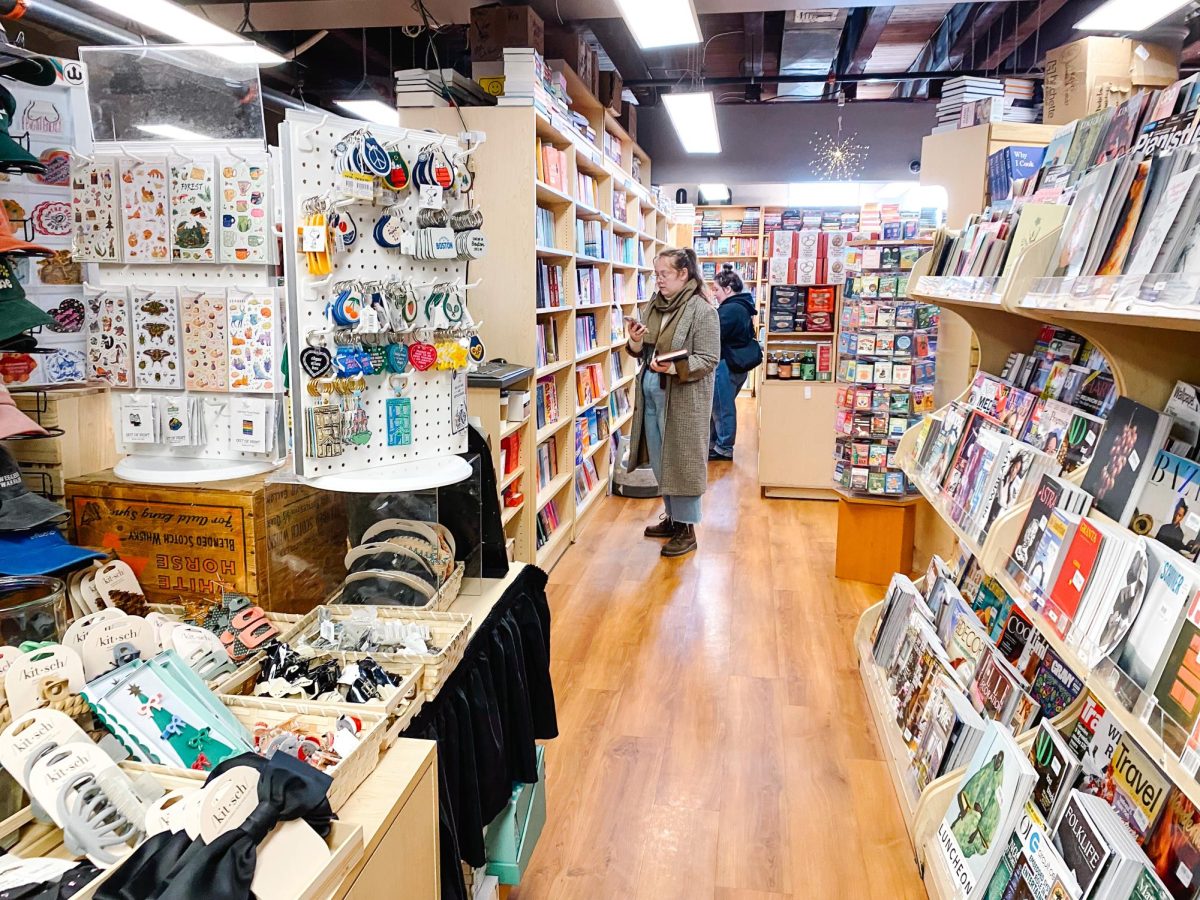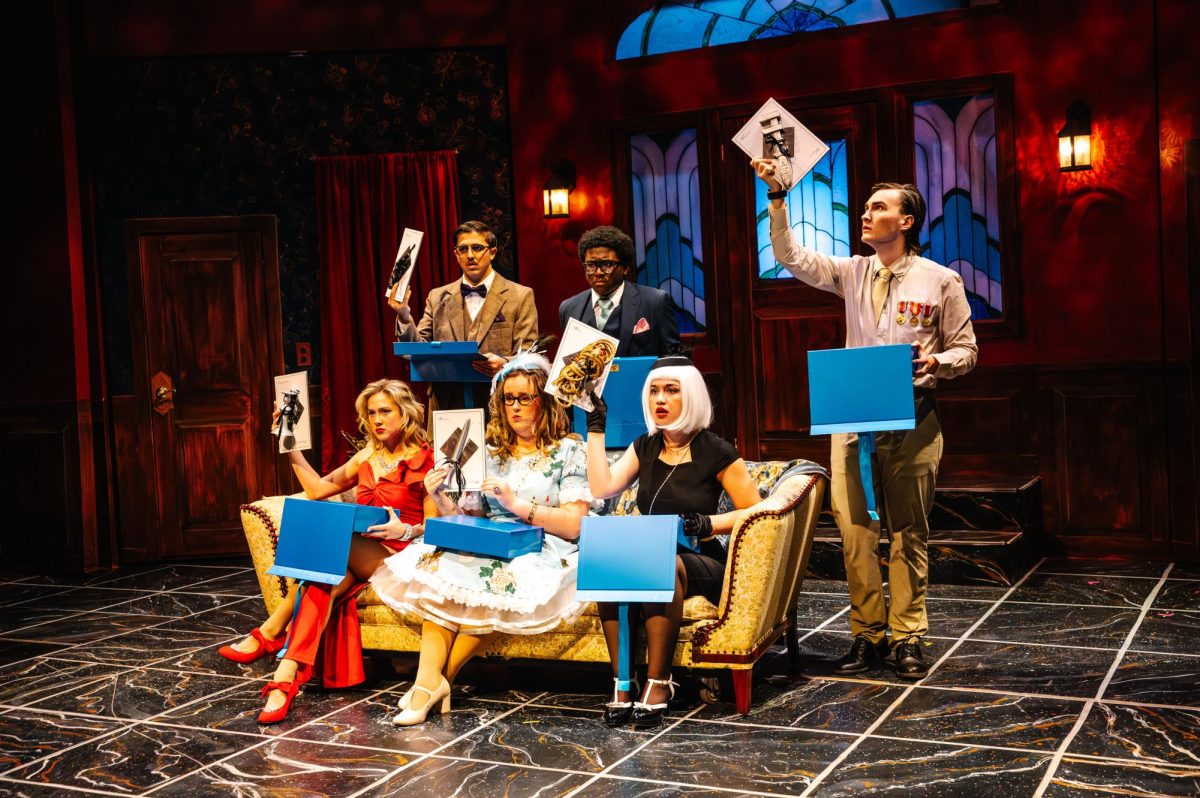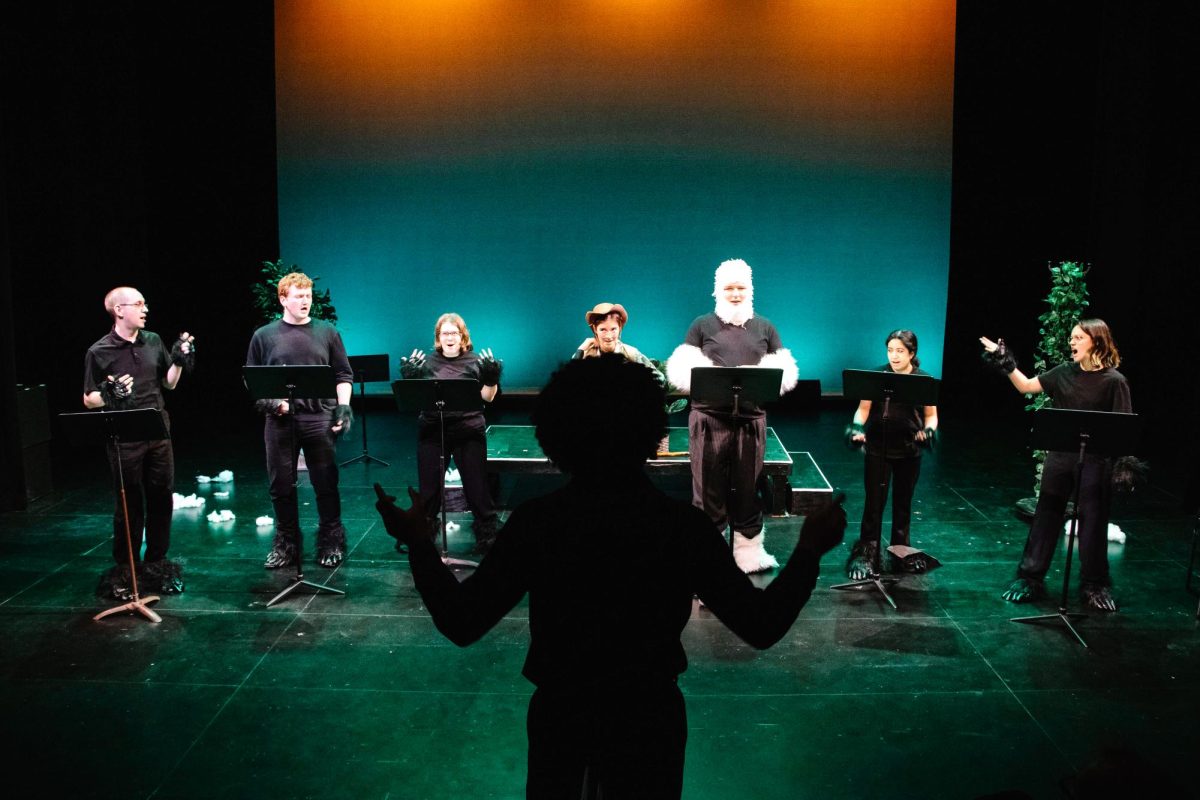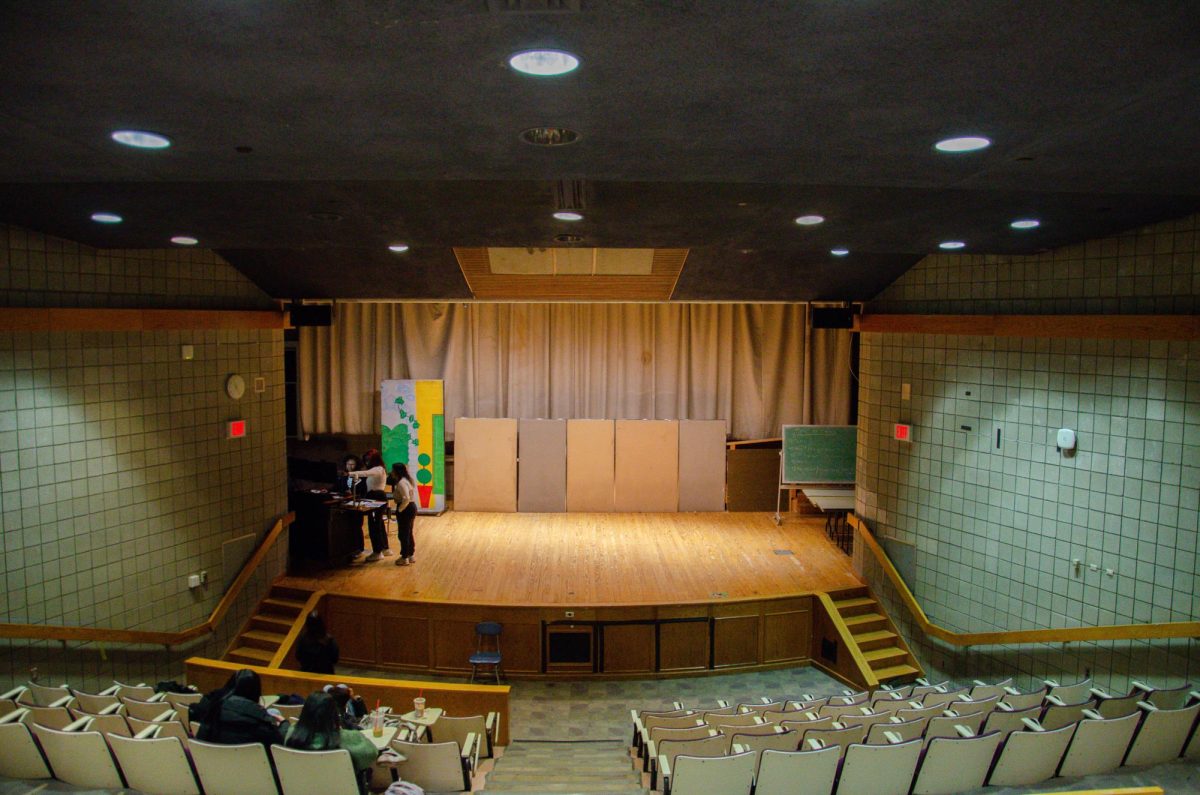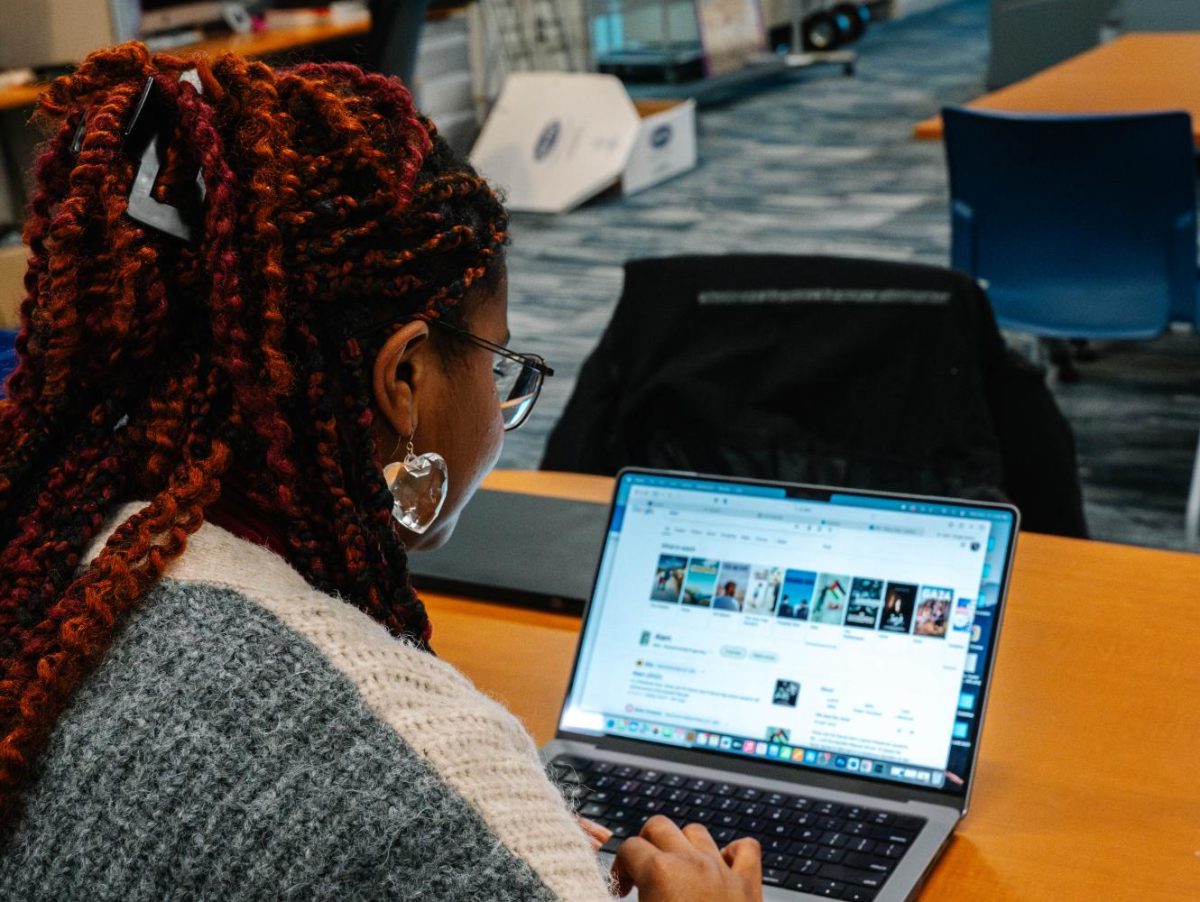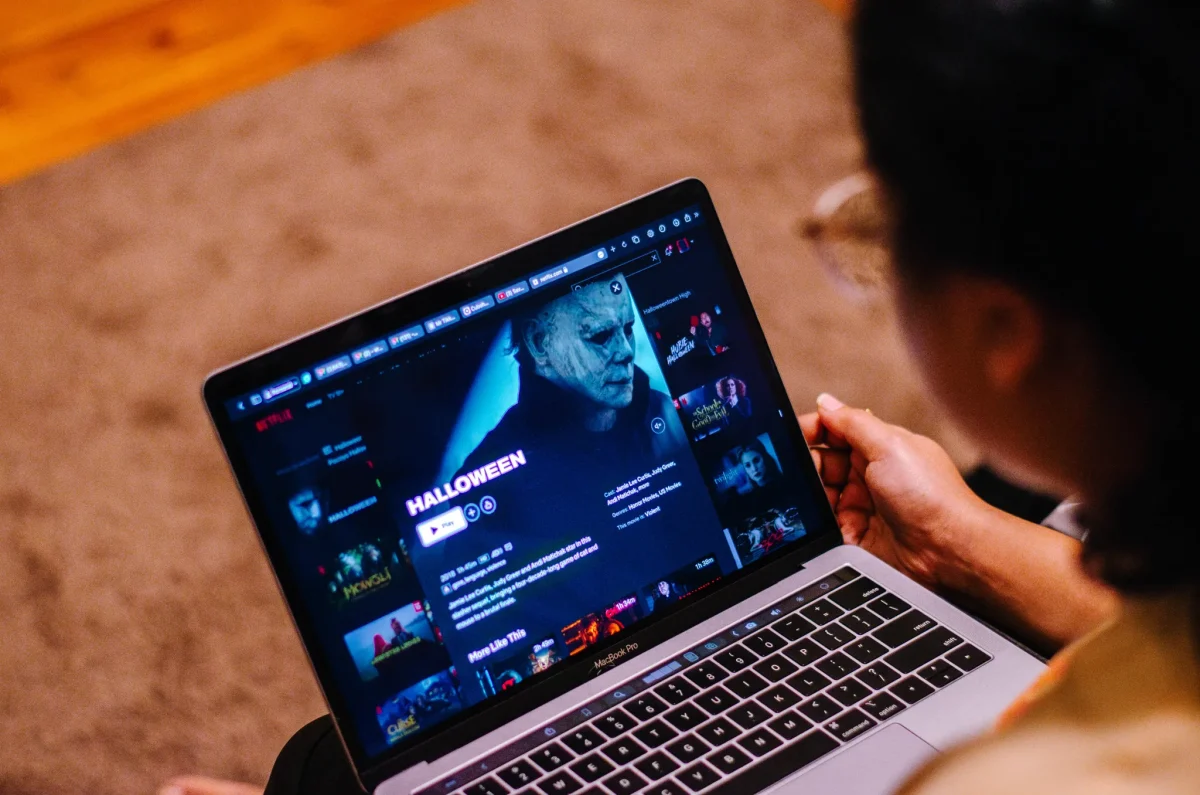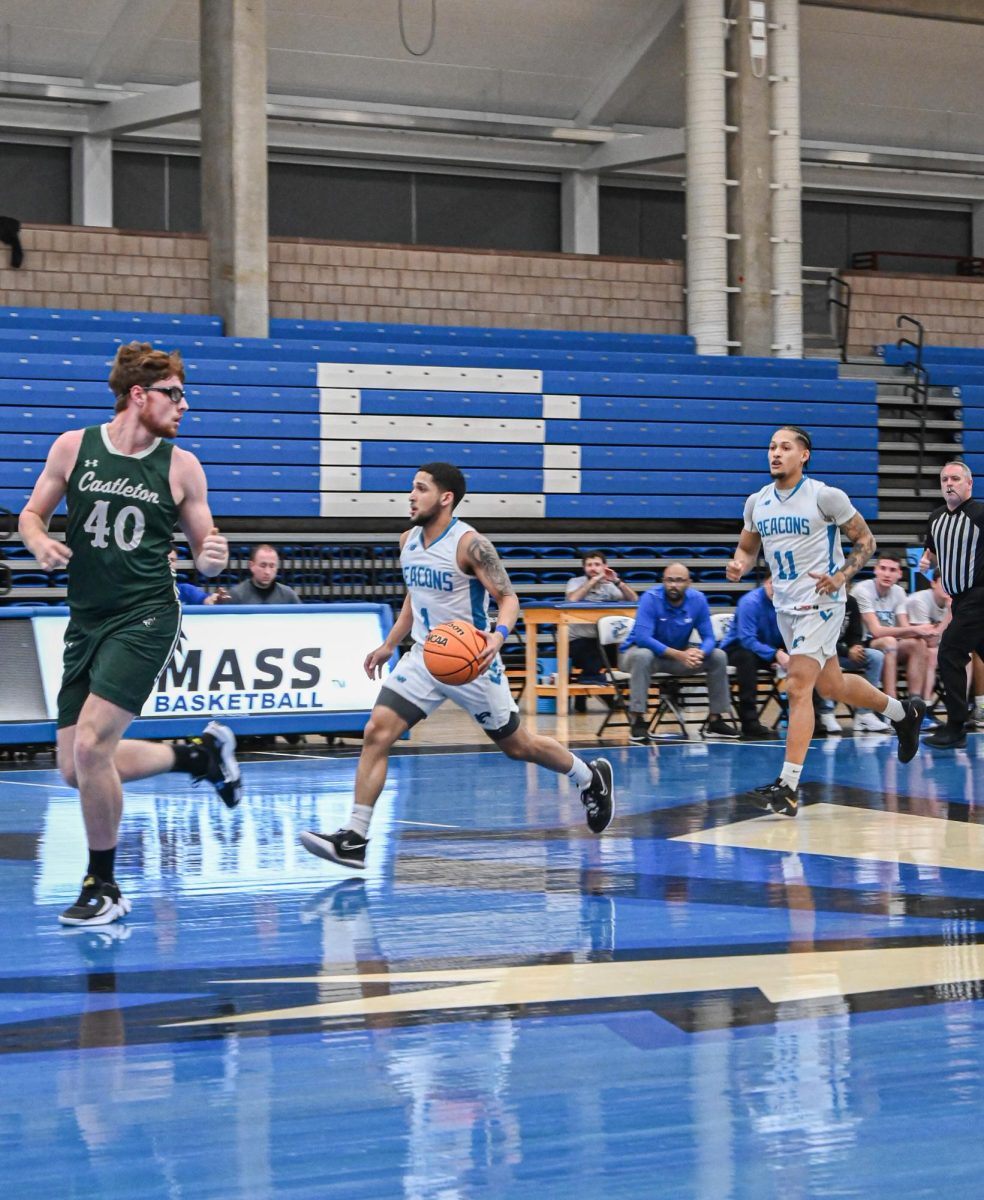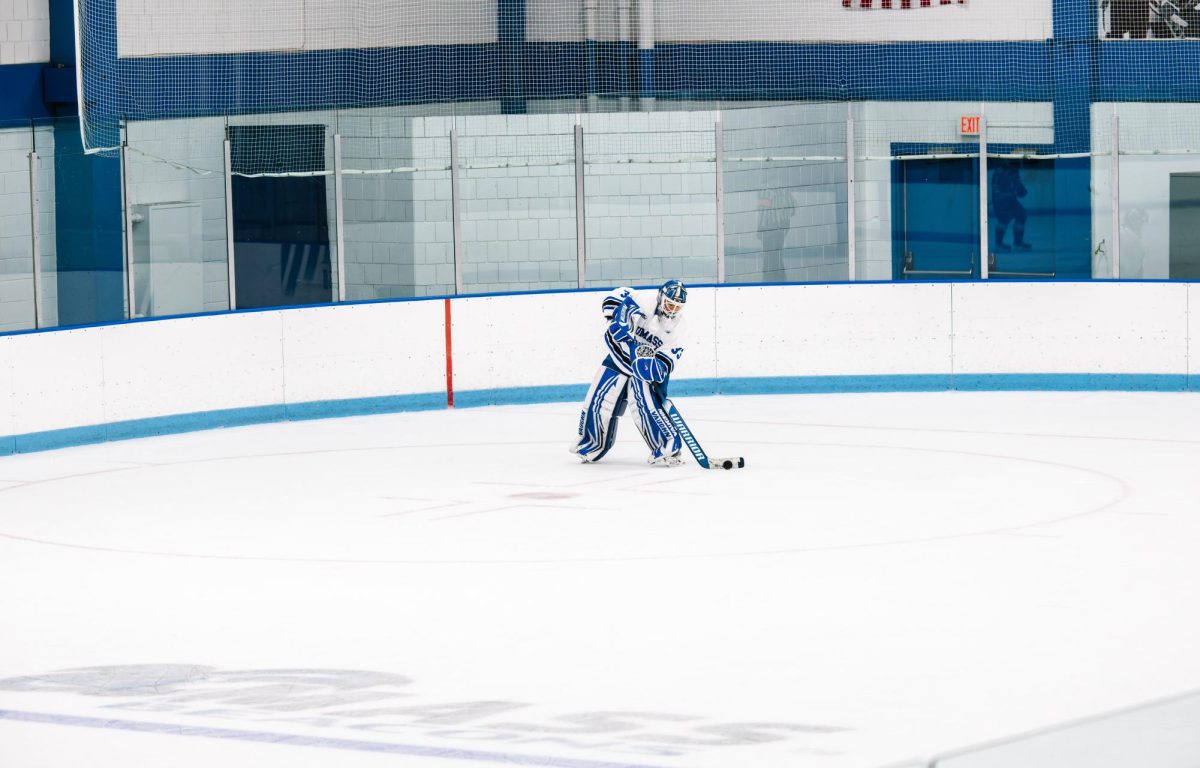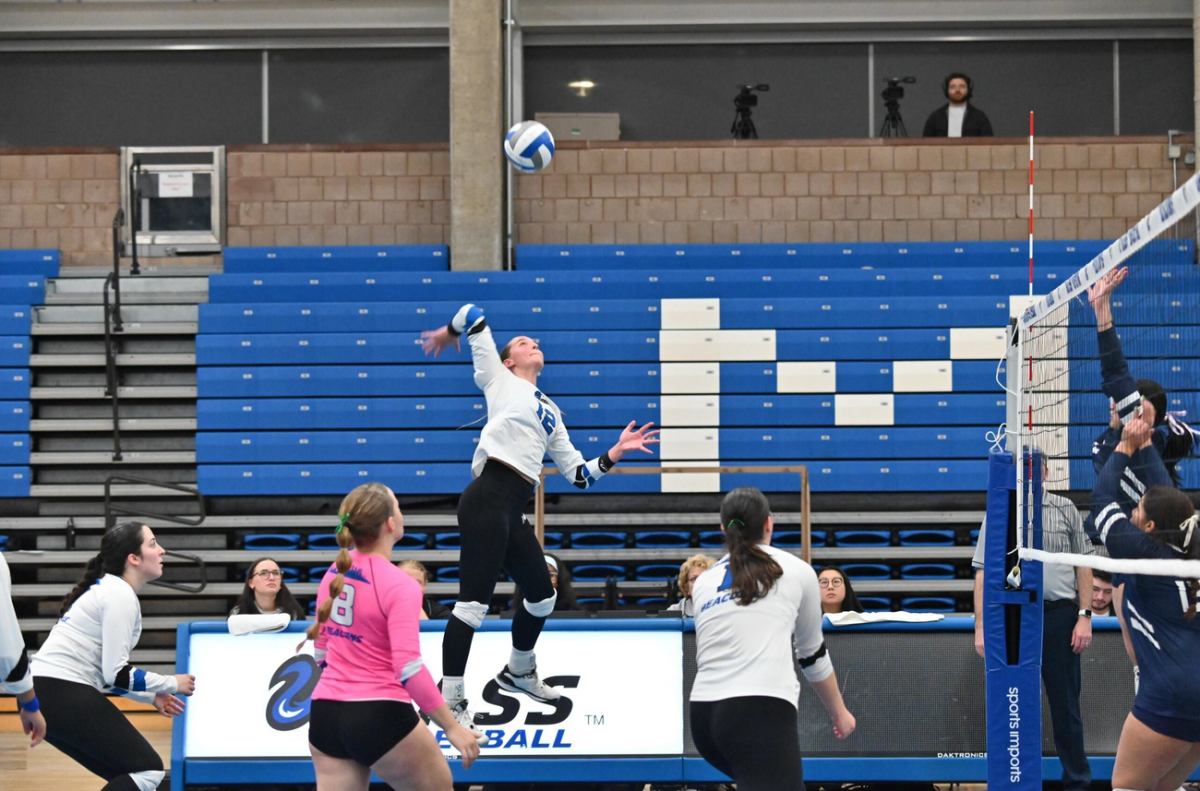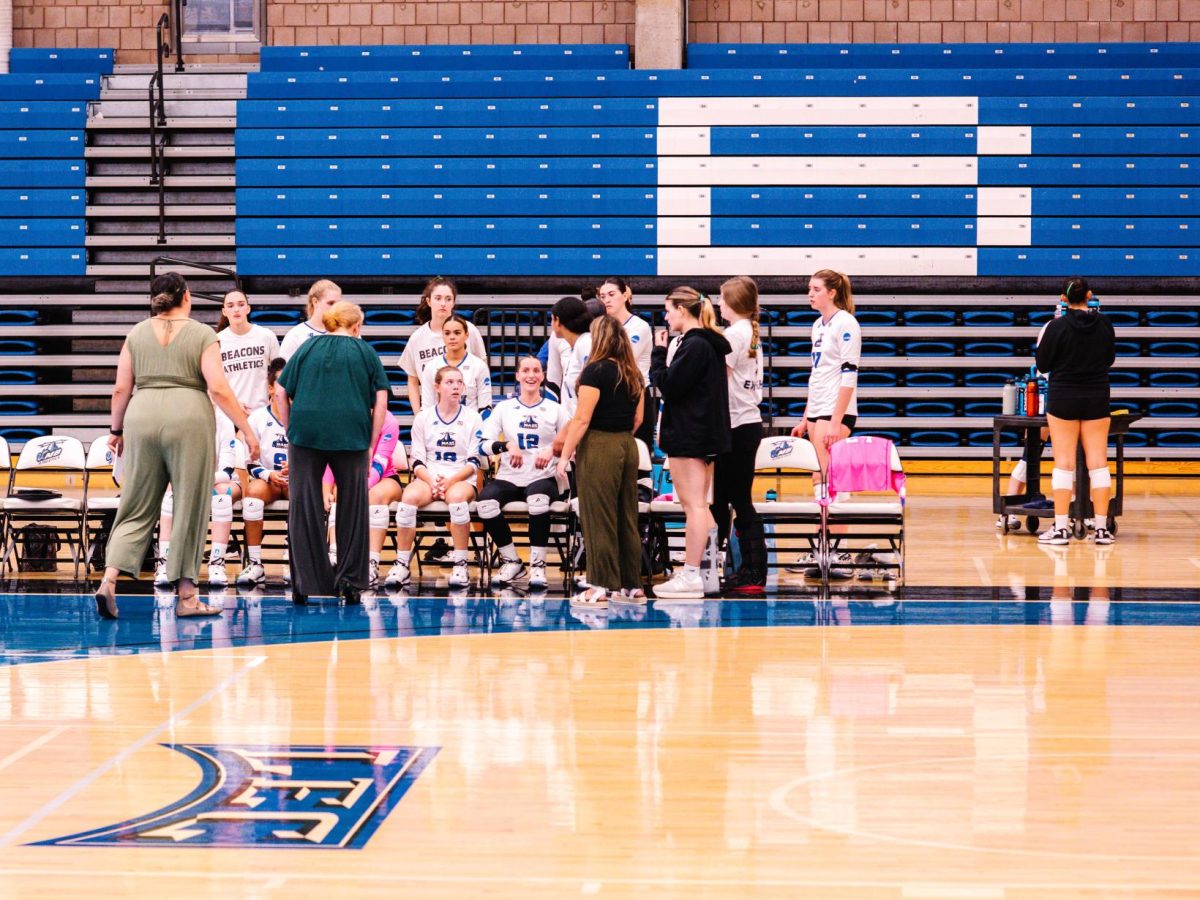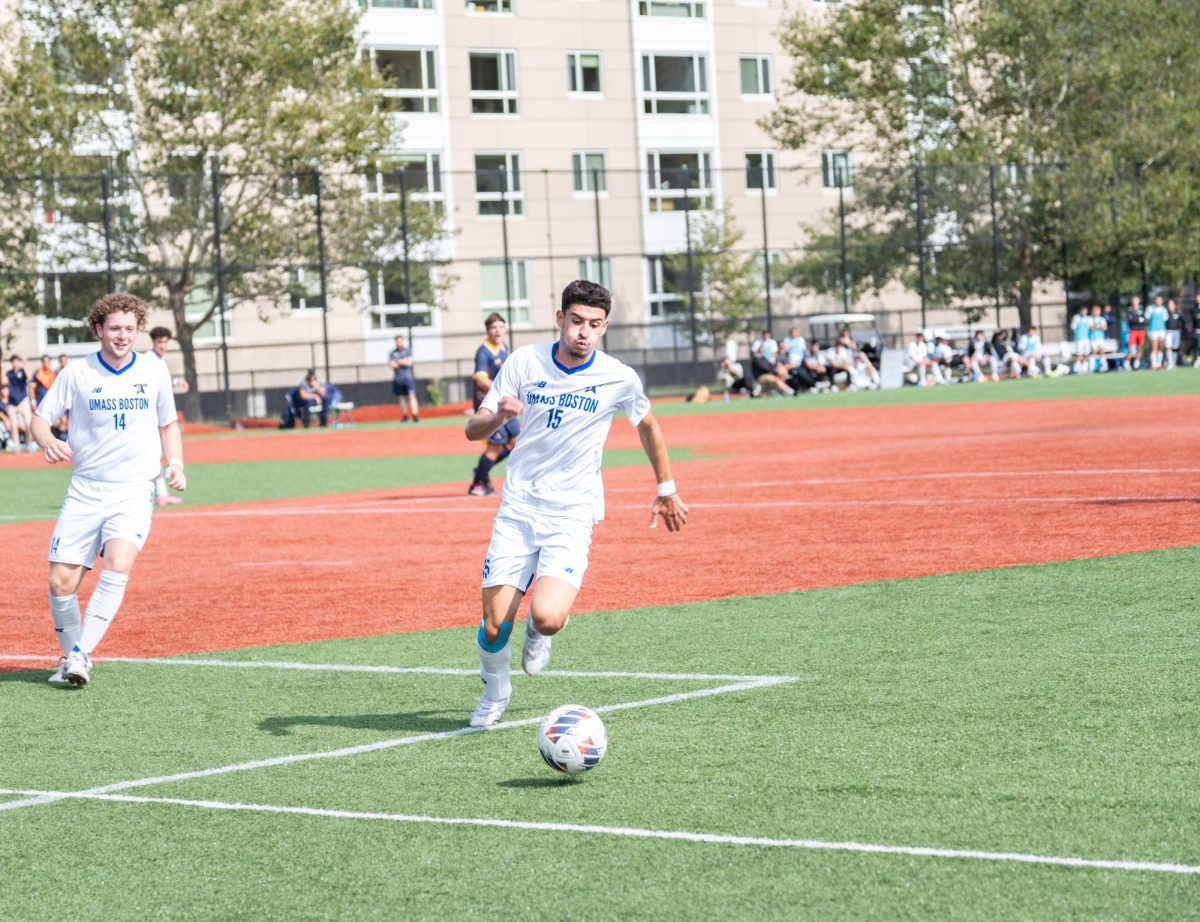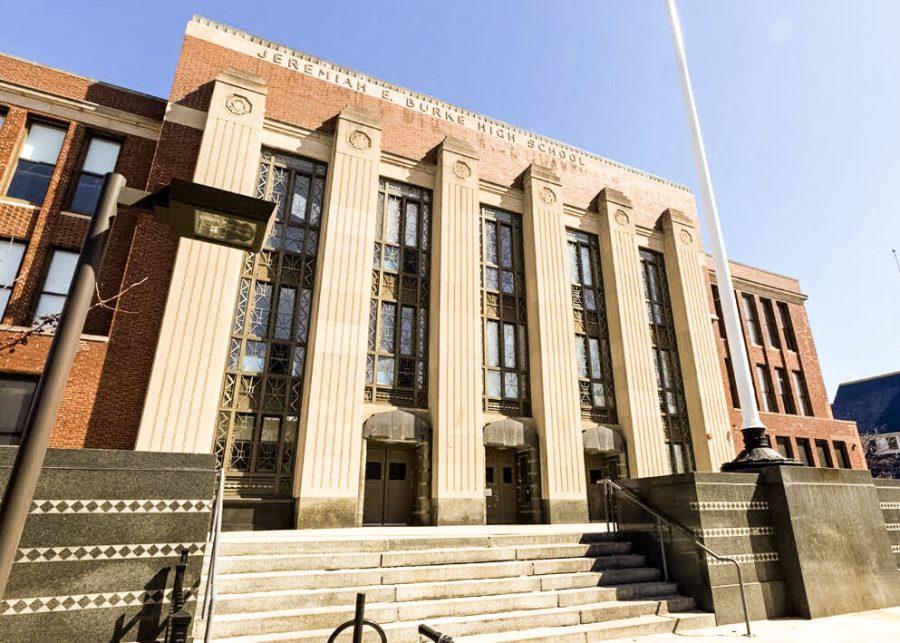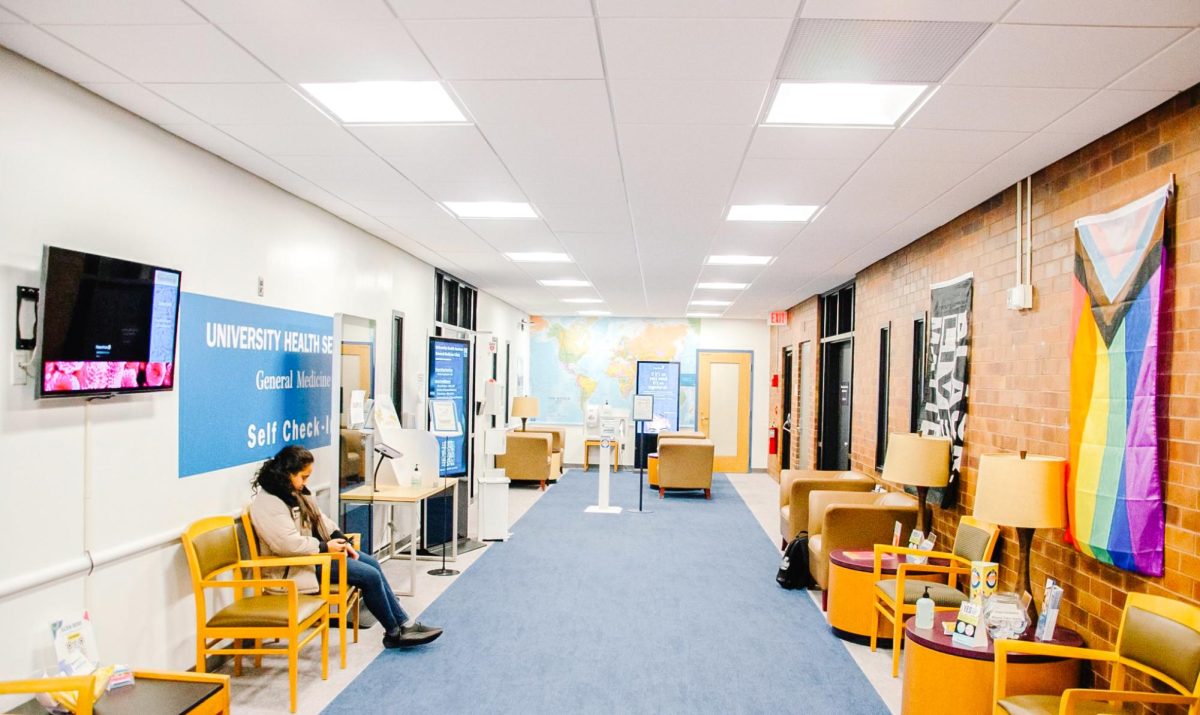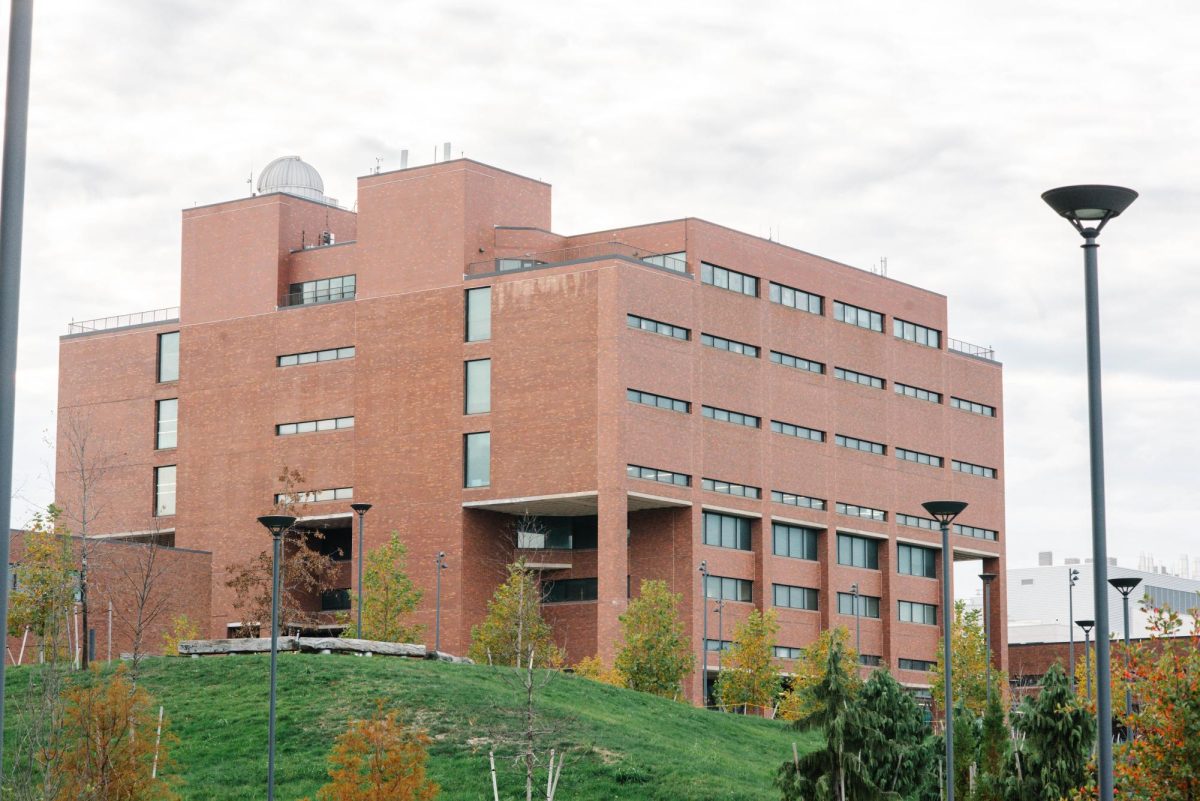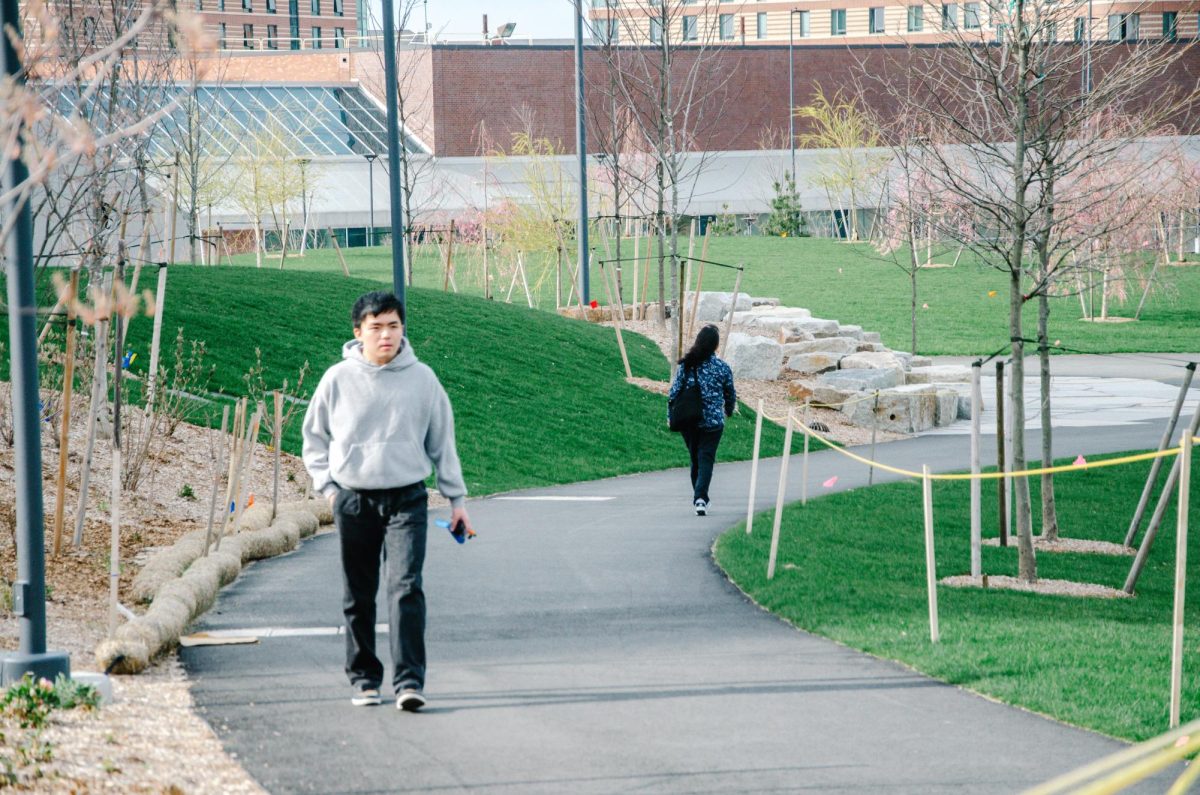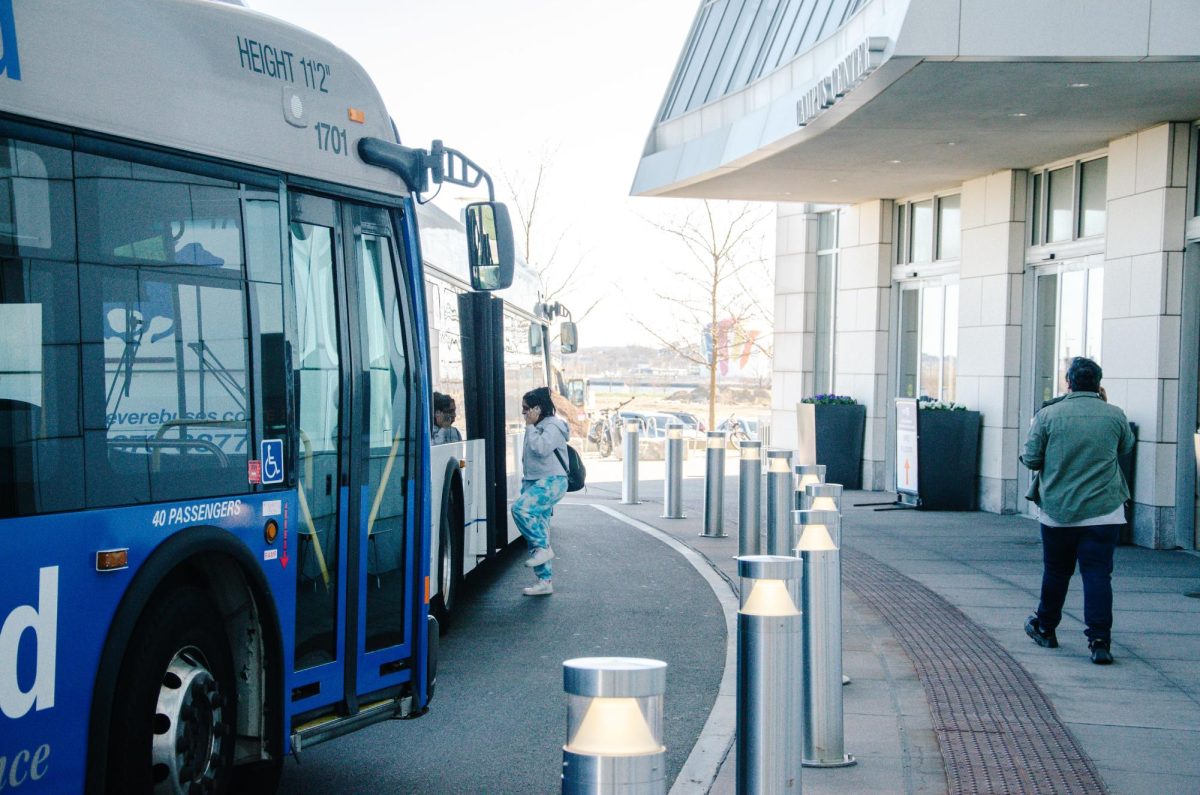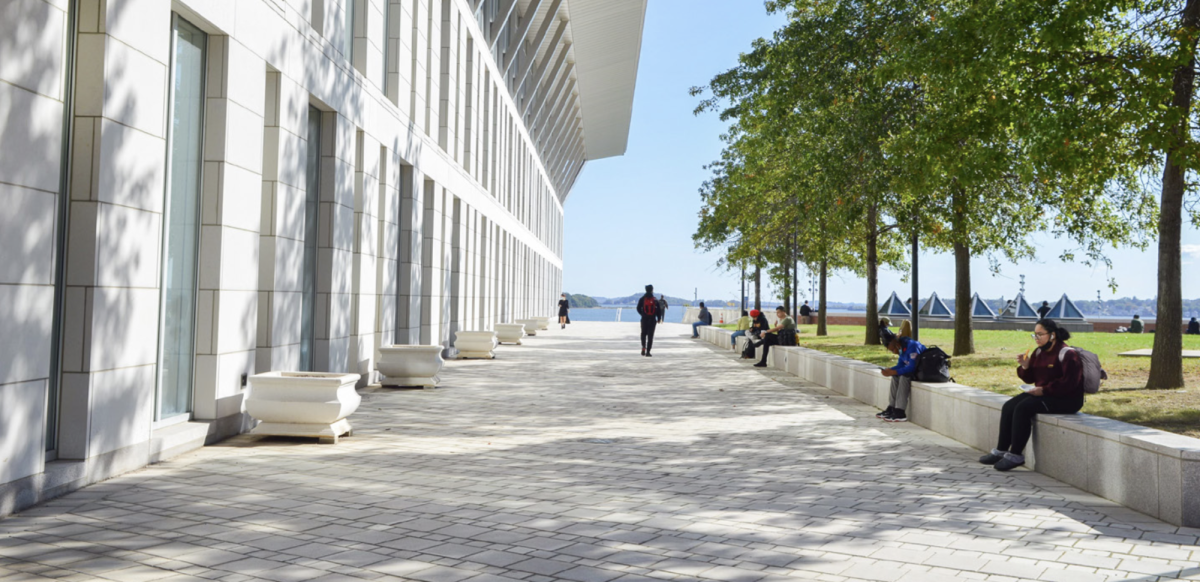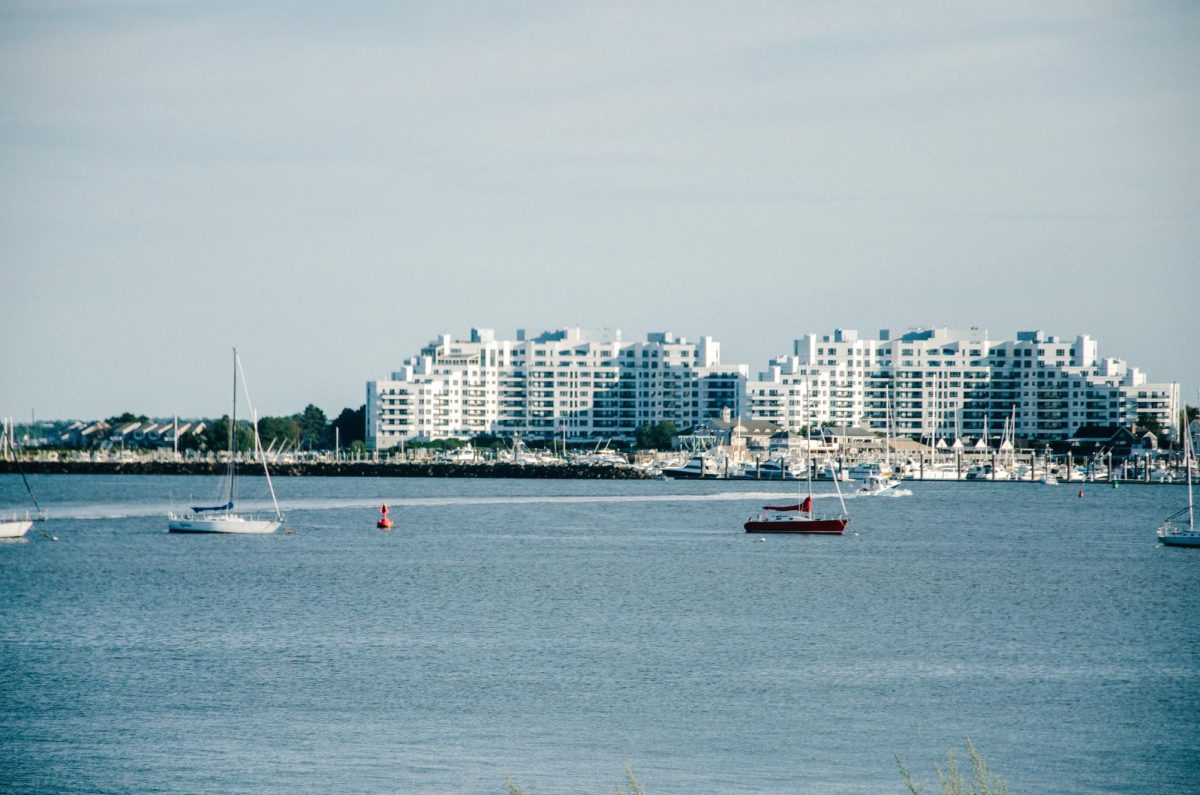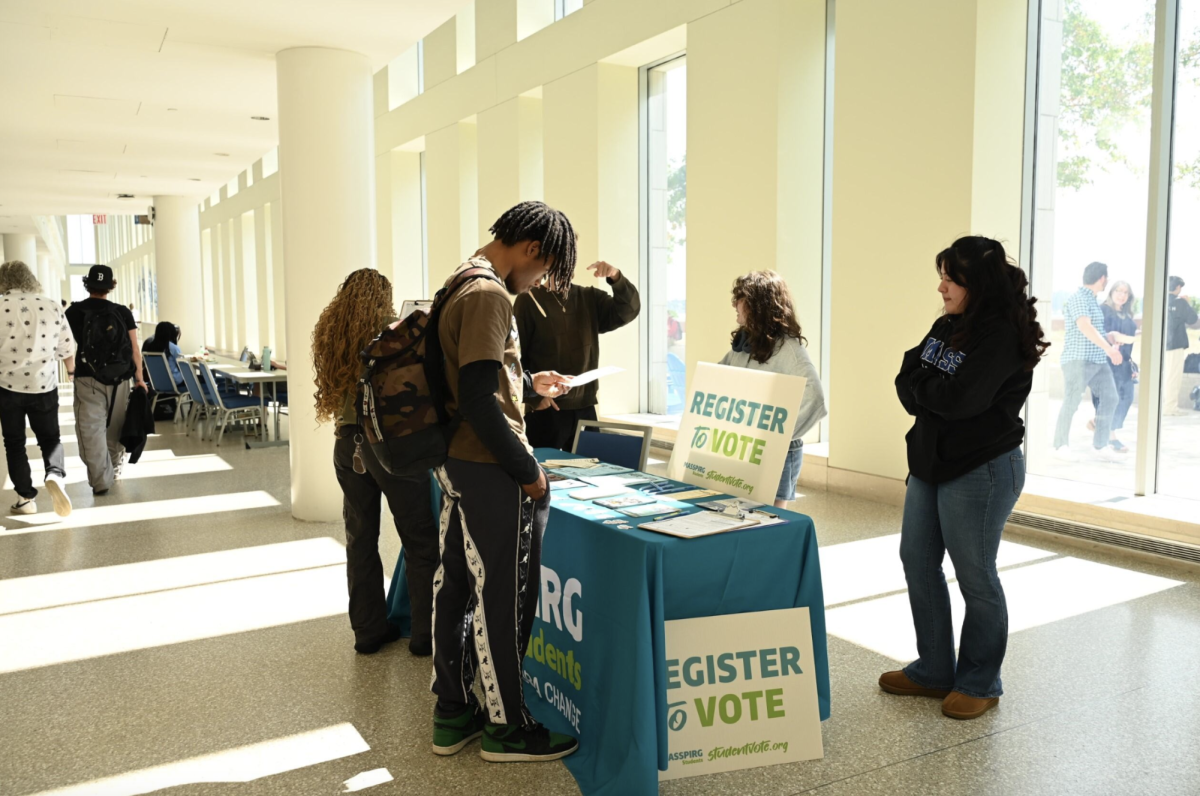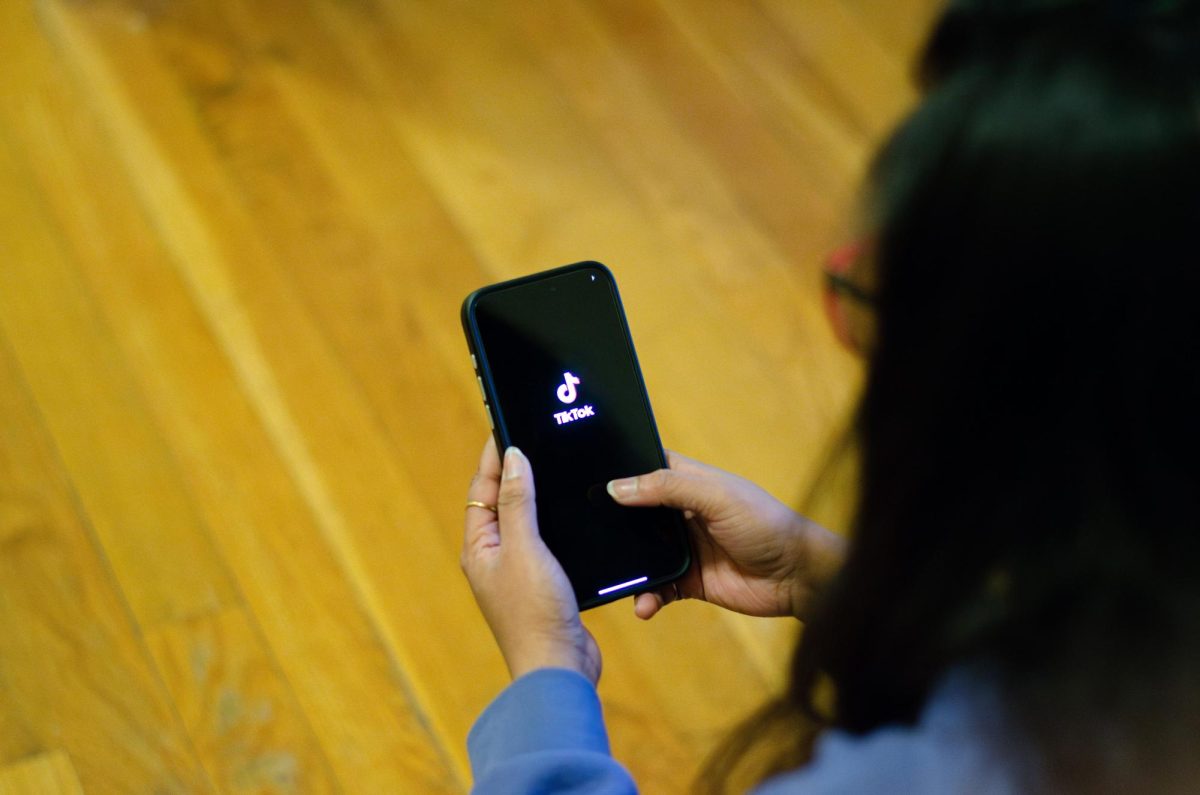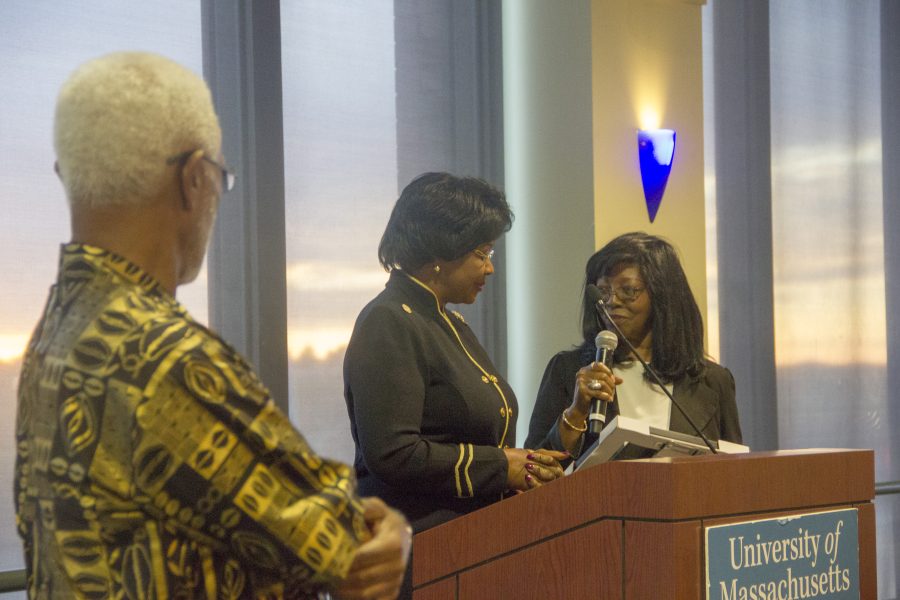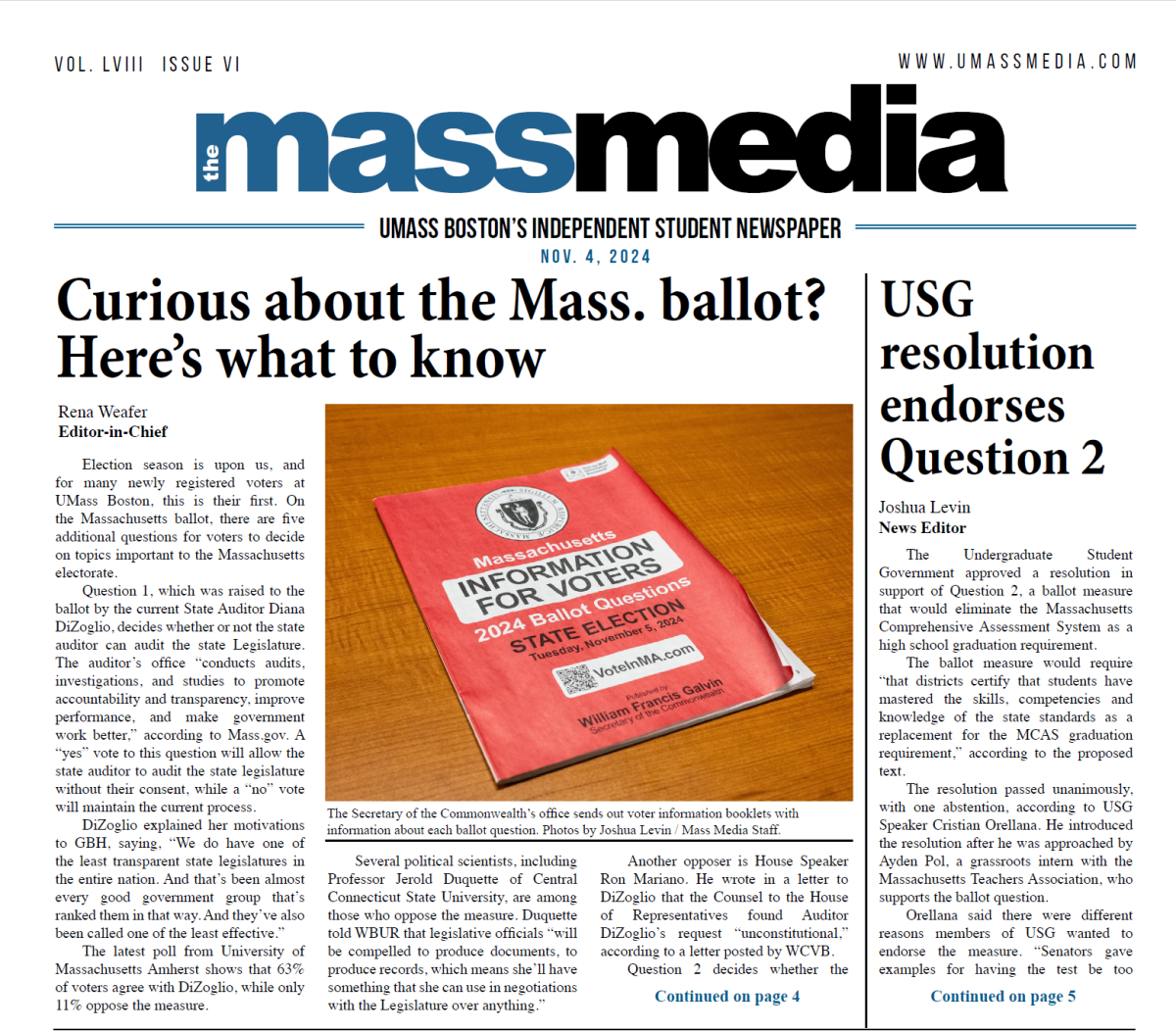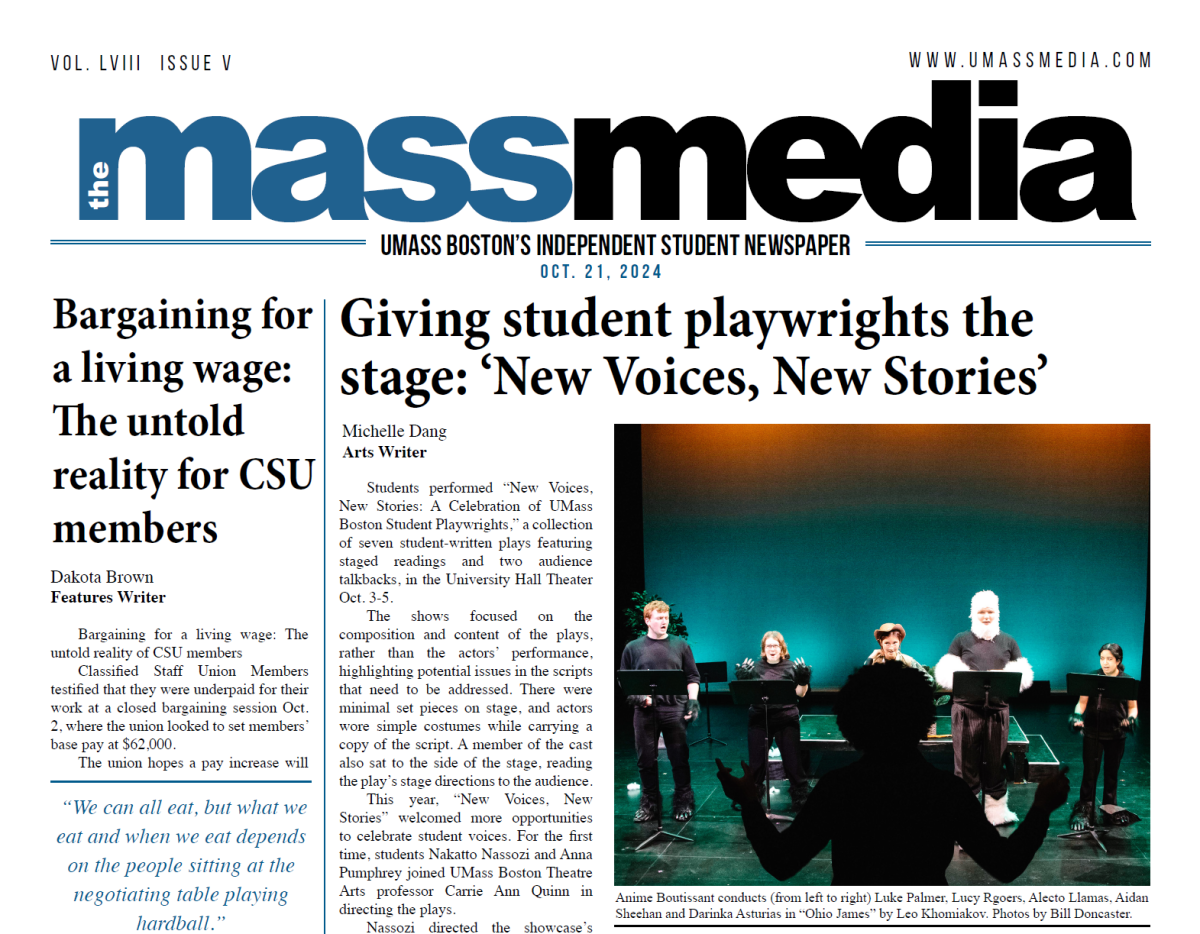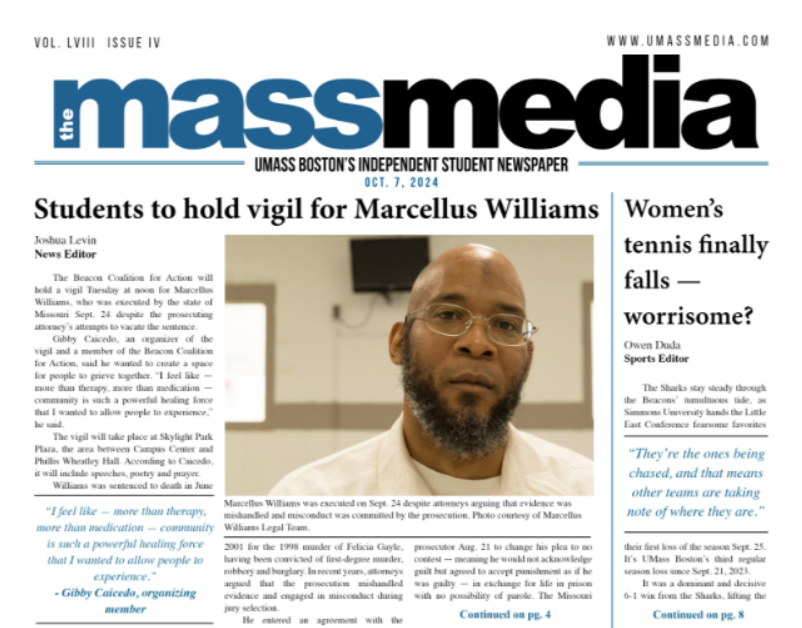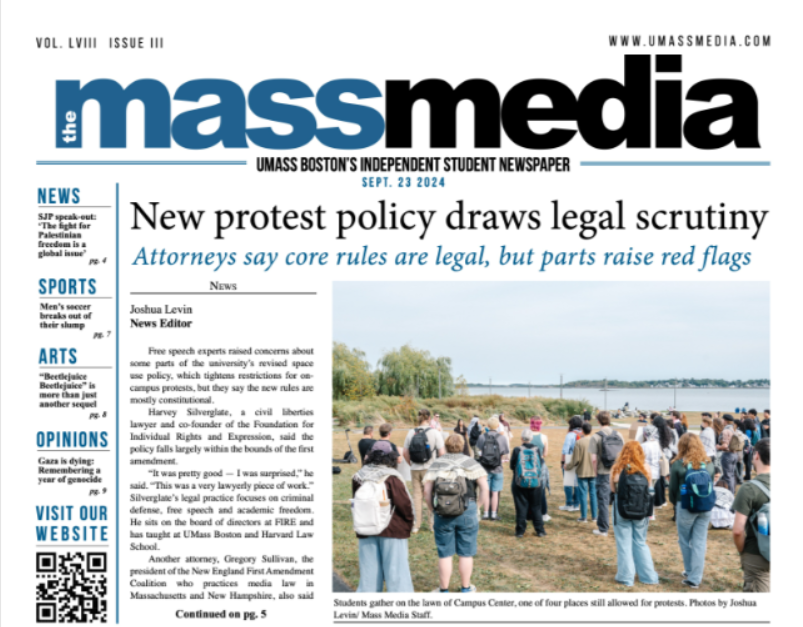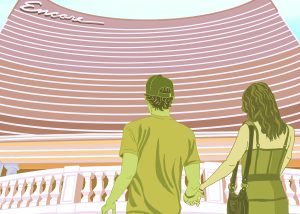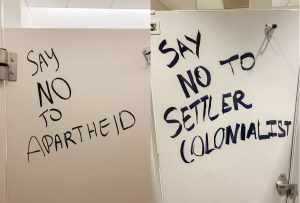DCAM: How d’yall like the Campus Center?
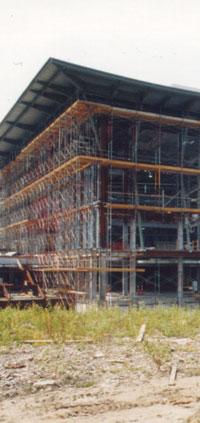
The Campus Center under construction in 2003
April 6, 2007
Last week the Campus Center at UMass Boston celebrated its third birthday. In the few short years since it was erected, it has dramatically changed the nature of the university and become the home base of many students on campus.
In honor of the building’s birthday, the Division of Capital Asset Management (DCAM) is conducting an evaluation of the Campus Center. They are looking to see if goals the university and state had in mind are being met.
One of the primary ways in which DCAM is gleaning information from students is through an anonymous online survey.
The survey asks what students’ favorite parts of the Campus Center are, what they would change about the campus center and how often they spend time there, among other things.
“It’s a nice place to be,” said senior Brendan J. Carran of the Campus Center, who began studying at UMass Boston before the building was opened. “It’s prettier than the other buildings,” he said, but added that it looks “kind of like a spaceship.”
Sophomore Kimberley John said that the Campus Center serves mainly as a transportation center for the university. She noted that it is the main entrance and exit to the campus, but to her serves little other purpose. “There’s nothing to do here,” she said, “It’s not a good place to study. Normally I’m in the Campus Center just to have my lunch.”
John also mentioned the seemingly never-ending construction on the entry points in the building. “The whole experience with the doors is just really messed up,” she said.
The primary goal behind the evaluation of the Campus Center is to learn from user feedback and use that information in the planning, design, construction and operations of future state buildings.
The building cost approximately $75 million to build and an evaluation is critical to determining if this was an appropriate use of state funds. DCAM evaluates each of its recently constructed buildings to assess how well the building meets the needs of the users and DCAM goals for new facilities.
In February, representatives from DCAM Polly Welch and Trish Chaput met with the undergraduate student senate and asked for their input. Members of the senate expressed serious concern over the inaccessibility of the Campus Center for the physically handicapped, as well as concerns over privacy issues.
On April 4, the Senate once again brought up the issue of buildings on campus and mentioned that the Campus Center is highly underutilized.
DCAM has a particularly interesting relationship with UMass Boston as the corruption, waste, fraud and abuse involved with the building of the original campus are what eventually led to DCAM being created.
When it was discovered that the construction company that had built the UMass Boston campus had paid off state legislatures to be awarded the contract, and that this resulted in inferior workmanship and shoddy buildings, a report known as the Ward Commission was created in order to expose the corruption of the state government when awarding these contracts.
This resulted directly in the creation of DCAM, whose purpose it is to manage state buildings and see that building are only of high quality and built for proper reasons.
DCAM’s survey on the Campus Center can be found on The Mass Media’s Web site or http://www.surveymonkey.com/s.asp?u=880683278404


